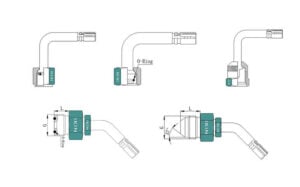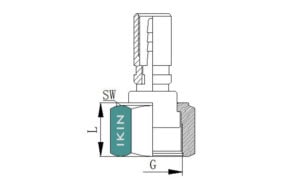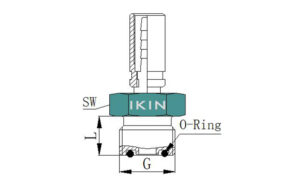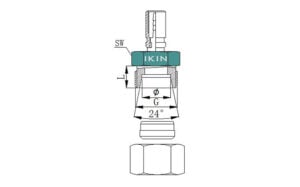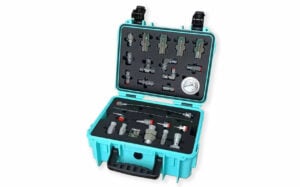Blog
How to operate hydraulic test fittings safely?
How to operate hydraulic test fittings safely?
Hydraulic test fittings are essential components in hydraulic systems, widely utilized in fields such as construction machinery, industrial equipment, aerospace, automotive manufacturing, and oil and gas.
Their primary role is to measure and monitor system pressure, ensuring stable operation and safety. However, improper use or poor maintenance can lead to system failures and potentially severe safety incidents.
Therefore, mastering the safe operation guidelines for pressure measuring joints is crucial. This paper delves into the correct operation and maintenance practices for pressure measurement joints to ensure their safety and reliability in practical applications.
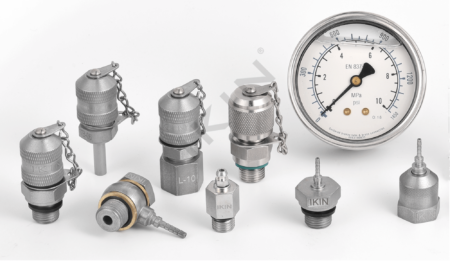
1. Basic structure and operation principle of pressure-measuring connectors
A pressure measuring fitting typically comprises a body, seals, and connecting components. Its function is to detect pressure fluctuations within a hydraulic system, delivering real-time data that allows operators to monitor and adjust the system’s performance accordingly. Hydraulic test fittings are engineered for optimal tightness and stability in high-pressure environments, effectively preventing fluid leaks and potential system failures.
2. Basic principles of safe operation
2.1 Knowledge of equipment
Before operating a pressure measuring fitting, it’s essential to thoroughly understand its structure, working principles, and operating instructions. Familiarize yourself with the equipment’s performance parameters, including maximum working pressure, temperature range, and suitable media. This knowledge ensures that the equipment operates within its design limits, preventing any operational issues.
2.2 Wear appropriate protective equipment
Always utilize suitable protective equipment, such as gloves, goggles, and protective clothing, when operating pressure-measuring fittings. This gear is crucial for preventing injuries from high-pressure fluid leaks and ensures operator safety.
2.3 Checking the status of equipment
Before operation, thoroughly inspect the condition of the pressure measuring fitting to ensure there are no signs of damage or wear. Pay special attention to the seals, which must be intact to prevent leaks. Additionally, check the connecting parts for tightness to ensure a secure and reliable connection.
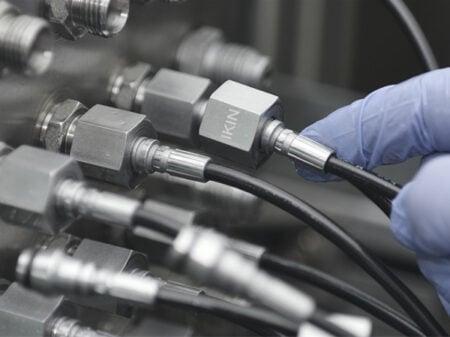
3. Safe practices for installation and dismantling
3.1 Installation of hydraulic test fittings
-Selecting an Appropriate Location: Choose a suitable spot within the hydraulic system for installation to ensure the measurement point accurately reflects the system’s operating pressure.
– Cleaning Connecting Parts: Prior to installation, thoroughly clean both the pressure measuring fitting and the system’s connecting parts to remove any impurities or contaminants that might compromise the seal.
– Using the Right Tools: Employ the correct tools for installation and avoid applying excessive force to prevent damage to the fittings or connecting components. Adhere to the equipment manufacturer’s installation instructions to ensure proper setup.
3.2 Disassembly of hydraulic test fittings
– Pressure Relief: Before removing the pressure measurement fitting, ensure that the system is fully depressurized to eliminate any residual pressure and prevent injuries from fluid discharge.
– Equipment Protection: During disassembly, carefully protect the pressure measurement fittings and connecting parts from impacts and damage. After removal, store the connectors properly to prevent contamination and damage.
4. Safety precautions in operation
Monitoring System Pressure: During operation, continuously monitor the system pressure in real-time to ensure it remains within a safe range. Avoid overpressure conditions to prevent damage to the pressure measuring fitting and the hydraulic system.
Avoiding Sudden Pressure Changes: Prevent sudden pressure changes during operation to avoid shocks to the pressure measuring fitting and the hydraulic system. Adjust the system pressure gradually to ensure a smooth transition.
Compliance with Operating Procedures: Adhere strictly to the operating procedures and avoid unauthorized actions. If any abnormal conditions arise during operation, stop immediately, identify the cause, and address it to ensure system safety.
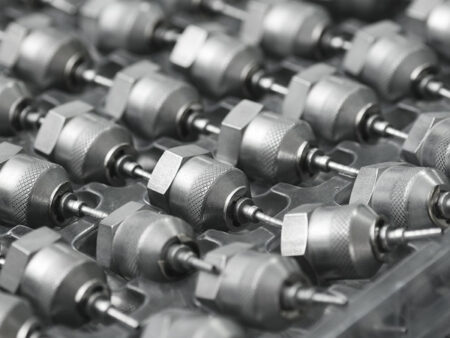
5. Safe practices for maintenance and upkeep
5.1 Regular inspection and maintenance
– Inspection of seals: Regularly inspect the seals of the pressure measuring joints, and replace them in time if they are found to be aged or damaged. Select high-performance sealing materials to improve the sealing effect and service life.
– Cleaning the equipment: Clean the pressure measurement fitting regularly to prevent dust, impurities and corrosive substances from entering the inside of the fitting. Use appropriate cleaning agents and tools to ensure that both the inside and outside of the fitting are kept clean.
5.2 Lubrication and fastening
– Lubrication: For pressure-measuring fittings that require frequent operation, lubricate regularly to reduce wear and operating resistance. Select a suitable lubricant and avoid lubricants that are harmful to the sealing material.
– TIGHTENING: Periodically check the tightness of the joints to ensure that they are securely connected. For loose joints, tighten them with appropriate tools to prevent leakage and system instability.
5.3 RAM
– Maintenance records: Detailed records of each maintenance and servicing, including inspection items, problems found and treatment measures. Through the maintenance records, the history of equipment use can be traced, potential problems can be found and dealt with in a timely manner.
– File management: Establish a file management system for the pressure measuring joints, keep the technical data, operation instructions and maintenance records of the equipment, etc., so as to facilitate the daily management and maintenance.
6. Emergency response measures
Regular Inspection and Maintenance:
- Seal Inspection: Regularly examine the seals of pressure measuring joints and promptly replace any that are aged or damaged. Use high-performance sealing materials to enhance sealing effectiveness and extend service life.
- Equipment Cleaning: Routinely clean the pressure measuring fitting to prevent dust, impurities, and corrosive substances from entering. Use appropriate cleaning agents and tools to ensure both the interior and exterior of the fitting remain clean.
Lubrication and Fastening:
- Lubrication: For pressure measuring fittings that require frequent operation, lubricate regularly to minimize wear and operational resistance. Choose a suitable lubricant and avoid those that could harm the sealing material.
- Tightening: Periodically check the tightness of the joints to ensure secure connections. Use appropriate tools to tighten any loose joints, preventing leaks and system instability.
Record and Maintenance (RAM):
- Maintenance Records: Keep detailed records of each maintenance session, including inspection items, identified issues, and corrective actions taken. These records help trace the equipment’s usage history and identify potential problems early.
- File Management: Establish a file management system for pressure measuring joints, maintaining technical data, operation instructions, and maintenance records. This system facilitates daily management and maintenance activities.
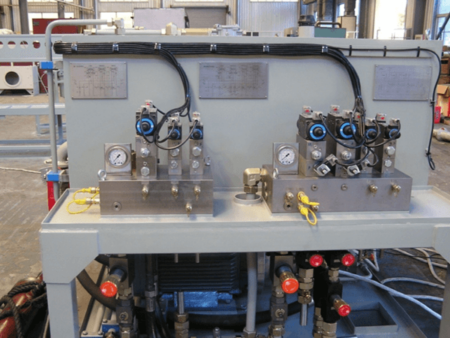
7. Case studies
Case 1: Safe Operation of hydraulic test fittings in a Chemical Plant
In a chemical plant, numerous hydraulic test fittings were utilized within the hydraulic system. An incident occurred when an operator failed to perform the necessary pressure relief operation, resulting in a high-pressure liquid spray during disassembly and causing injury.
Following an investigation, the chemical plant developed detailed operating procedures and provided comprehensive training to the operators. These measures significantly improved the operational safety of the pressure measuring joints and prevented similar incidents from occurring.
Case 2: Maintenance of pressure-measuring fittings at a manufacturing company
A manufacturing company employed high-pressure hydraulic test fittings in its hydraulic press equipment. Due to neglect in timely maintenance and repair, the seals of the pressure-measuring fittings deteriorated and became damaged, leading to system leaks.
To address the issue, the company took the following actions: replaced all deteriorated seals with high-performance sealing materials; regularly inspected and cleaned the pressure-measuring fittings to ensure optimal condition; and trained operators to enhance their maintenance and operation skills. These measures effectively resolved the leakage problem and improved both the operational efficiency and safety of the equipment.
Hydraulic test fittings are crucial components in hydraulic systems, and their safe operation and maintenance are directly linked to the stability and safety of the system. By understanding the equipment’s structure, wearing appropriate protective gear, checking the equipment’s condition, installing and removing it correctly, monitoring system pressure, avoiding sudden pressure changes, adhering to operating procedures, conducting regular inspections and maintenance, maintaining thorough records and files, and implementing emergency response measures, you can ensure the safety and reliability of pressure-testing fittings in practical applications.
Real-world case studies demonstrate that following scientific operation and maintenance protocols not only enhances the service life and performance of pressure measuring joints but also effectively prevents safety incidents. Therefore, attention to the safe operation specifications of pressure measuring joints is essential for ensuring the stable operation of hydraulic systems and the safety of operators.
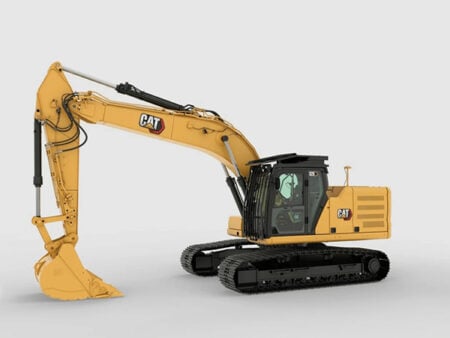
Common problems and solutions during pressure testing
Common problems and solutions during pressure testing
Pressure testing is essential for ensuring the proper operation and safety of hydraulic systems and equipment. It helps detect weaknesses, verify design pressures, and identify potential leaks within the system.
However, various issues may arise during pressure testing. If these problems are not addressed promptly and effectively, they can affect test results and even jeopardize system safety.
This article provides an in-depth analysis of common problems encountered during pressure testing and offers practical solutions. We will also discuss these issues through real-world examples. By offering detailed analysis and discussion, this article aims to provide practical guidance to ensure the stability and safety of hydraulic systems.

**1. Common problems during pressure testing**
**1.1 Leakage**
Leaks are among the most common issues encountered during pressure testing. They can occur at system connections, seals, or along piping. The causes of leaks are varied and may include deteriorated seals, improper installation, or defective materials.
**Solutions:**
Inspection and Replacement of Seals: Regularly inspect the condition of seals. Any seals that are deteriorated or damaged should be promptly replaced to prevent potential leakage.
Correct Installation: Ensure that all connections and piping are installed correctly, using appropriate methods and tools. Proper tightening and sealing of each component are essential to prevent leaks.
Material Selection: Choose materials that are corrosion-resistant and capable of withstanding high pressures. Selecting the right materials for the system’s working environment enhances the overall reliability of the system.
By implementing these solutions, the likelihood of leaks can be significantly reduced, ensuring the integrity and safety of the hydraulic system during pressure testing.
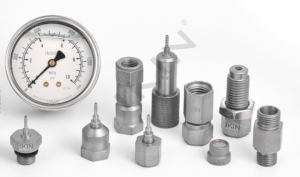
**1.2 Pressure fluctuations**
Pressure fluctuation refers to unstable pressure during testing, which can be caused by poor system design, unstable pressure sources, or equipment failure.
**Solutions:**
Optimized System Design: Ensure that the system is well-designed to prevent sudden changes in pressure. A robust design minimizes the likelihood of pressure fluctuations and significantly reduces associated problems.
Stable Pressure Source: Utilize a reliable pressure source that can provide continuous and stable pressure, ensuring the system operates normally and efficiently.
Equipment Maintenance: Conduct regular inspections and maintenance of pressure source equipment. Timely identification and resolution of potential issues are crucial to maintaining optimal working conditions and preventing pressure instability.
Implementing these solutions will help stabilize pressure during testing, ensuring the system’s reliability and accuracy.
**1.3 Inaccurate meter readings**
During pressure testing, inaccurate meter readings can compromise the accuracy of the test results. This issue may arise due to improper calibration of the gauge, incorrect mounting position, or gauge malfunction.
**Solutions:**
Periodic Calibration of Meters: Calibrate the meters at regular intervals to maintain accurate readings and ensure the reliability of the test data.
Select an Appropriate Mounting Location: Install the meter in a suitable location that minimizes vibration and interference, which can affect the accuracy of the readings.
Replacement of Malfunctioning Meters: Promptly replace any malfunctioning meters to maintain the accuracy and integrity of the test results.
By addressing these factors, the accuracy of meter readings can be ensured, thereby enhancing the reliability of the pressure test outcomes.
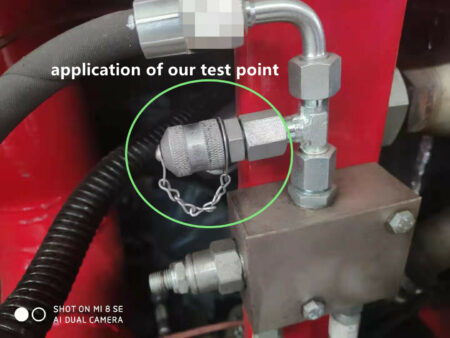
**1.4 Temperature effects**
Temperature variations can significantly impact pressure test results, particularly in extreme high or low-temperature environments. These fluctuations can cause materials to expand or contract, affecting the system’s sealing and pressure stability.
**Solutions:**
Selection of Temperature-Resistant Materials: Choose materials that are resistant to temperature changes based on the system’s working environment. This ensures that the system maintains stable performance under extreme temperature conditions.
Implement Temperature Compensation Mechanism: Introduce a temperature compensation mechanism during testing to minimize the impact of temperature fluctuations on the results. This helps ensure the accuracy and reliability of the pressure tests.
By addressing temperature-related issues, the stability and accuracy of pressure test results can be significantly improved.
**1.5 Connectivity issues**
Connection problems are a common challenge during pressure testing, often caused by mismatched fitting types, improper installation, or loose connections.
**Solutions:**
Selecting the Appropriate Fitting Type: Choose fittings that are compatible with the system design and suitable for the working environment to ensure proper matching with the rest of the system.
Correct Installation of Fittings: Follow standard methods and procedures for installing fittings to ensure a secure and reliable connection.
Regular Inspection and Tightening: Conduct periodic inspections of connection points and promptly tighten any loose parts to maintain a solid and dependable connection.
By addressing these connection issues, the reliability and effectiveness of pressure testing can be significantly enhanced.
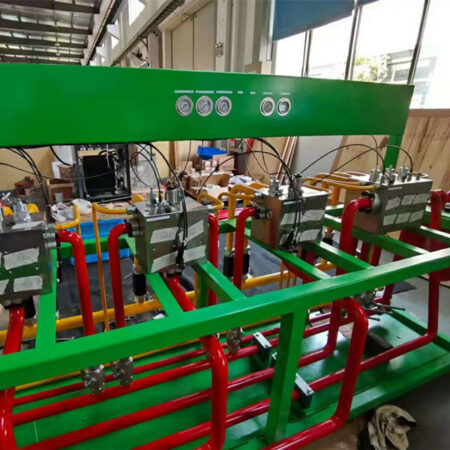
**2. Solutions for pressure testing**
**2.1 Development of a Detailed Test Plan**
Before conducting a pressure test, it is crucial to develop a comprehensive test plan that outlines the purpose, scope, methodology, steps, and expected outcomes. A detailed test plan helps clarify the objectives and ensures that the testing process is systematic and organized.
**2.2 Use of High-Quality Test Equipment**
Using high-quality test equipment is essential for obtaining accurate and reliable results. Select certified and calibrated equipment, and ensure that it is in optimal working condition before use.
**2.3 Training and Education**
Provide thorough training and education for operators to equip them with the necessary knowledge and skills for pressure testing. Training should cover the use of test equipment, execution of test procedures, and identification and resolution of common issues.
**2.4 Recording and Analysis**
During the pressure test, meticulously record all data and results, including pressure, temperature, time, and environmental conditions. Analyzing this data helps identify potential problems and implement timely corrective measures.
**2.5 Development of Contingency Plans**
Develop a comprehensive contingency plan to address any emergencies that may arise during the testing process. The plan should include procedures for handling leaks, equipment failures, and safety measures to ensure the testing process remains safe and efficient.
By implementing these strategies, the reliability and accuracy of pressure testing can be significantly enhanced, ensuring the safe and effective operation of hydraulic systems.
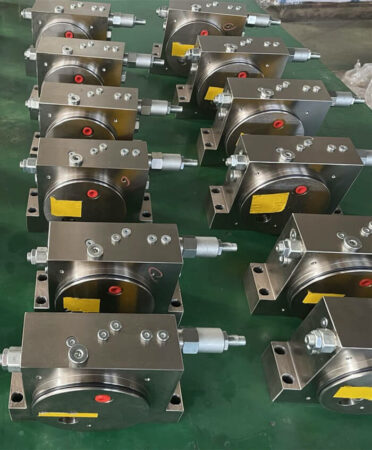
**3. Case Studies**
**Case 1: Pressure Testing in a Chemical Plant**
During the pressure testing of a new piping system at a chemical plant, multiple leaks were detected. Upon investigation, it was determined that the primary causes of the leaks were aging seals and improper installation. To address these issues, the chemical plant implemented the following measures:
– Replaced all deteriorated seals with corrosion-resistant, high-performance sealing materials to enhance durability and reliability.
– Conducted a thorough inspection and tightening of all connections to ensure that the installation complied with relevant codes and standards.
– Provided comprehensive training to operators to enhance their installation and operational skills.
By taking these steps, the chemical plant effectively resolved the leakage issues and ensured the safety and stability of the piping system.
**Case II: Pressure Testing in a Pharmaceutical Company**
During a pressure test of the hydraulic system at a pharmaceutical company, significant pressure fluctuations were detected. Analysis revealed that these fluctuations were caused by an unstable pressure source and poor system design. To address these issues, the pharmaceutical company implemented the following measures:
– Replaced the existing pressure source with more stable equipment to ensure a continuous and stable pressure supply.
– Redesigned the hydraulic system, optimizing the piping layout and connections to enhance overall system stability.
– Introduced an automated control system to monitor and regulate pressure in real-time, ensuring consistent system pressure.
By implementing these measures, the pharmaceutical company successfully resolved the issue of pressure fluctuations, significantly improving the operational efficiency and stability of the hydraulic system.
**Case IV: Pressure Testing at an Aerospace Company**
During pressure testing of an aircraft hydraulic system at an aerospace company, significant effects of temperature variations on the test results were observed. Analysis determined that these temperature changes caused material expansion and contraction, which impacted the system’s sealing and pressure stability. To address this issue, the aerospace company implemented the following measures:
– Selected temperature-resistant materials suitable for both high and low-temperature environments to ensure stable performance despite temperature fluctuations.
– Introduced a temperature compensation mechanism during the testing process to adjust system parameters in real-time, ensuring the accuracy of the test results.
– Controlled the test environment to minimize the impact of temperature variations on the testing process.
By adopting these measures, the aerospace company successfully mitigated the issues caused by temperature variations, significantly enhancing the accuracy and reliability of the pressure tests.
**Case V: Pressure Testing in a Shipping Company**
During a pressure test of a ship’s hydraulic system at a shipping company, issues were identified at multiple joints. Inspection revealed that these problems were due to mismatched joint types and improper installation. To resolve these issues, the shipping company implemented the following measures:
– Selected appropriate fittings that were compatible with the system, ensuring they matched the rest of the hydraulic components.
– Reinstalled the connectors following correct methods and procedures to guarantee a secure and reliable connection.
– Conducted thorough inspections and tightened all connections to ensure system stability and safety.
By taking these steps, the shipping company successfully addressed the connection issues, ensuring the normal operation and reliability of the ship’s hydraulic system.

Pressure testing is a vital procedure for ensuring the proper functioning and safety of hydraulic systems and equipment. During testing, issues such as leaks, pressure fluctuations, inaccurate gauge readings, temperature effects, and connection problems can arise. These challenges can be effectively managed through the implementation of detailed test plans, the use of high-quality testing equipment, comprehensive operator training, meticulous recording and analysis of test data, and robust contingency plans. These measures ensure the accuracy and reliability of pressure tests.
Analyzing real-world cases demonstrates that scientific pressure testing methods and strategies not only address issues encountered during testing but also enhance the operational efficiency and safety of hydraulic systems. Therefore, focusing on the identification and resolution of problems during the pressure testing process is crucial for maintaining the stable operation of hydraulic systems.
Hydraulic Pressure Fittings Applied in Various Industries
Hydraulic Pressure Fittings Applied in Various Industries
Pressure measuring fittings are essential hydraulic components. They monitor pressure in hydraulic systems to ensure safety and stability. These fittings are used in many industries, including construction, industrial equipment, aerospace, automotive manufacturing, and oil & gas. Each industry has different performance requirements.
The performance requirements for pressure measuring fittings differ across industries. Specific examples demonstrate the practical importance of these fittings.
In this article, we will explore how pressure-measuring fittings are used across various industries. We’ll analyze their key roles and impacts through specific case studies.
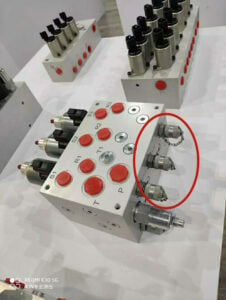
1. In the field of construction machinery
In the construction machinery industry, pressure measuring fittings are indispensable components. Equipment such as excavators, bulldozers, and loaders must endure harsh environments for extended periods, demanding highly reliable hydraulic systems.
Pressure measuring fittings play a critical role by continuously monitoring hydraulic system pressure in real time. This real-time monitoring ensures that the equipment operates within the optimal pressure range, thereby enhancing reliability, preventing system failures, and maintaining peak performance and safety.
Excavators, bulldozers, loaders, and similar equipment often operate in harsh environments for prolonged periods. This demanding usage necessitates exceptional reliability in their hydraulic systems. To achieve this, pressure measuring fittings are employed to monitor the hydraulic system’s pressure in real time. These fittings ensure that the equipment operates within the optimal pressure range, thereby preventing potential system failures and maintaining peak performance and safety standards.
**Case Study: Excavator Application**
A leading construction machinery company incorporates high-performance pressure measuring fittings in the hydraulic systems of its excavators. Given that excavators are required to function in high-intensity work environments, the pressure resistance and durability of these fittings are crucial.
These pressure measuring fittings are crafted from the latest high-strength alloy materials and utilize advanced sealing technology. This design enables them to perform reliably for extended periods under high-pressure and high-temperature conditions, effectively preventing leaks and system failures.
Through regular maintenance and servicing, the company’s excavators have significantly enhanced their operational efficiency and safety. The robust construction of these fittings ensures that the hydraulic systems remain reliable, thereby optimizing performance and reducing downtime. This meticulous approach to equipment maintenance has contributed to the company’s reputation for producing durable and efficient machinery capable of withstanding the rigors of demanding construction environments.
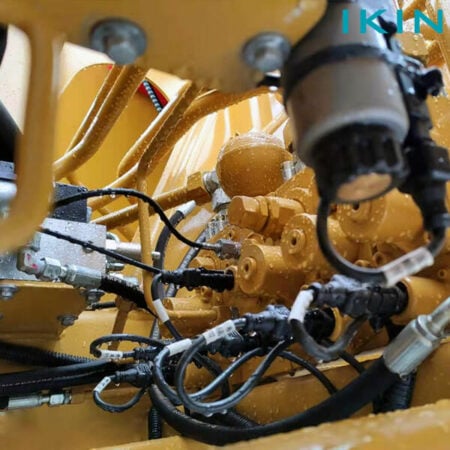
2. **Industrial Equipment Sector**
Industrial equipment such as hydraulic presses, die casting machines, and injection molding machines heavily rely on pressure measuring fittings. These fittings ensure the systems operate smoothly under high pressure and high temperature conditions. They provide accurate pressure data, enabling operators to adjust system parameters in a timely manner. This real-time data optimizes equipment performance and ensures an efficient, stable production process.
**Case Study: Hydraulic Press Application in a Manufacturing Company**
A manufacturing company has implemented new high-pressure gauge fittings in its hydraulic press equipment. Precise pressure control is essential for hydraulic presses during production, making the accuracy and stability of these fittings crucial.
By utilizing high-performance pressure measuring fittings, the company has notably enhanced the quality of its hydraulic products. This improvement has led to a significant reduction in scrap rates and an increase in production efficiency. The reliable performance of these fittings ensures that the hydraulic presses maintain consistent pressure control, thereby optimizing the overall manufacturing process and ensuring high-quality output.
3. **Automobile Manufacturing Sector**
In the automotive manufacturing sector, hydraulic systems play a crucial role in braking, steering, and suspension systems. Pressure measuring fittings are essential for real-time pressure monitoring in these systems, ensuring the vehicle’s safety performance under various operating conditions.
**Case Study: Braking System Application for an Automobile Manufacturer**
A renowned automobile manufacturer has integrated intelligent pressure measurement fittings into the braking system of its latest models. These advanced fittings combine a pressure sensor with data transmission capabilities, allowing real-time pressure data to be sent to the vehicle’s electronic control system. This continuous data stream enables the system to dynamically adjust brake pressure, significantly enhancing braking performance and vehicle safety.
The manufacturer has also conducted extensive testing and validation to ensure these pressure-measuring fittings maintain optimal performance across different climatic conditions and driving environments. This rigorous testing ensures that the fittings provide consistent, reliable data, contributing to a safer and more dependable driving experience for consumers. By incorporating these intelligent fittings, the automaker has improved the overall safety and reliability of its vehicles, reinforcing its commitment to quality and innovation in automotive design.

4. **Oil and Gas Sector**
In the oil and gas industry, hydraulic systems must function in complex environments with significant pressure fluctuations and exposure to corrosive media. Pressure measuring fittings are critical in these systems for monitoring the pressure of pipelines and equipment, preventing safety incidents such as leaks and explosions.
**Case Study: High-Pressure Pipeline Application in an Oilfield Project**
An oilfield project implemented high-pressure gauge fittings within its pipeline system. These fittings, constructed from high-strength alloys and featuring multi-layer seals, are engineered to withstand high-pressure and highly corrosive environments over extended periods. Regular inspections and maintenance have enabled the project team to avert numerous potential leakage incidents, ensuring safe production and environmental compliance.
Additionally, these pressure measuring fittings are equipped with remote monitoring technology, allowing operators to observe real-time pressure changes in the pipeline from a central control room. This capability ensures that any abnormalities are quickly addressed, significantly enhancing production efficiency and safety management in the oilfield. The integration of these advanced fittings not only ensures the structural integrity of the pipeline system but also supports the overall safety and efficiency of the oilfield operations.
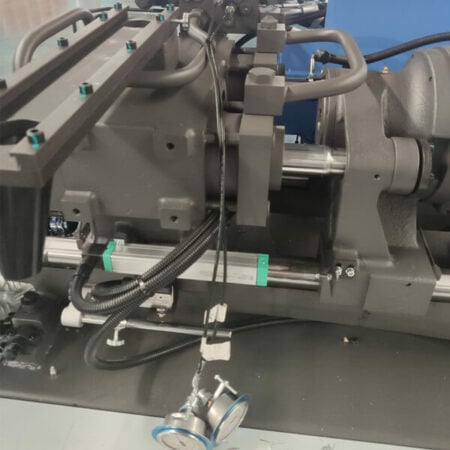
5. **Building Construction Sector**
In the building construction sector, large mechanical equipment such as tower cranes and concrete pump trucks rely on stable hydraulic systems for optimal performance. Pressure measuring fittings are crucial in these hydraulic systems to ensure stability and safety during construction activities5.
**Case Study: Tower Crane Application for a Construction Company**
A construction company has integrated high-precision pressure measurement fittings into the hydraulic systems of its tower cranes. During construction, tower cranes frequently lift heavy loads, demanding extremely stringent pressure requirements for their hydraulic systems. By employing high-performance pressure measuring fittings, the company has significantly enhanced construction efficiency and safety in large-scale projects.
These advanced pressure measuring fittings feature the latest self-locking design, ensuring that the fittings remain secure under high pressure and vibration. This innovation greatly improves the reliability and operational safety of construction equipment, enabling the tower cranes to function seamlessly in demanding environments. Consequently, the construction company has achieved higher productivity and reduced risks, reinforcing the importance of utilizing top-tier pressure measuring fittings in critical construction machinery.
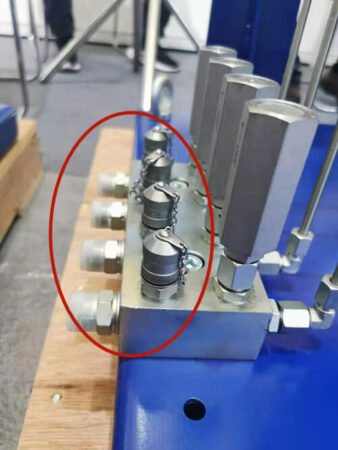
6. **Agricultural Machinery Sector**
In the agricultural machinery sector, equipment such as tractors, harvesters, and planters rely heavily on hydraulic systems. Pressure measuring fittings are essential for monitoring and controlling these hydraulic systems, ensuring the machines’ reliability and efficiency in various farming operations.
**Case Study: Harvester Application for an Agricultural Machinery Company**
An agricultural machinery company has implemented a new type of pressure measuring connector in the hydraulic system of its latest harvester model. These advanced fittings allow operators to monitor the hydraulic system’s status in real time, enabling timely adjustments and maintenance. As a result, the harvester performs reliably in field operations, reducing mechanical failures and enhancing harvesting efficiency.
These pressure measuring fittings feature an anti-fouling design that effectively prevents soil and impurities from entering the system. This design keeps the hydraulic system clean and functioning properly, ultimately improving the efficiency and service life of the agricultural machinery.
By adopting these innovative fittings, the company has ensured that its harvesters deliver optimal performance, contributing to more productive and efficient farming operations.
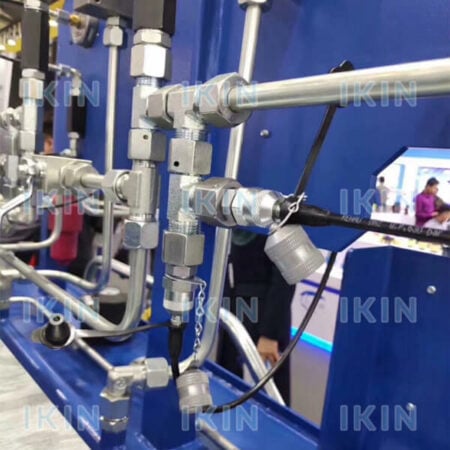
7. **Mining Sector**
The mining industry is highly demanding, and hydraulic systems are crucial for the performance of mining equipment. Pressure measuring fittings are essential for monitoring the hydraulic systems in this sector, ensuring stable operation under high loads, high pressures, and harsh environmental conditions.
**Case Study: Hydraulic Drilling Rig Application for a Mining Company**
A mining company has integrated high-performance pressure measuring couplings into the hydraulic systems of its drilling rigs. These couplings are made with special wear-resistant materials and a multi-layer sealing structure, allowing them to operate reliably for extended periods under high-pressure and high-vibration conditions.
Through regular maintenance and real-time monitoring, the company’s hydraulic drilling rigs perform exceptionally well in deep well drilling and ore extraction. This significantly boosts both efficiency and safety. The use of these advanced pressure measuring couplings not only extends the lifespan of the equipment but also reduces downtime caused by equipment failures, thereby improving overall productivity at the mine. By leveraging these robust fittings, the mining company ensures that its drilling operations are more efficient, reliable, and productive.
The case studies above clearly illustrate the application of pressure measuring fittings across various industrial fields, highlighting their critical role in ensuring the stable operation and safety of hydraulic systems. These fittings help enterprises improve productivity, reduce maintenance costs, and enhance safety.

As technology continues to advance, the performance and functionality of pressure measuring fittings are also improving. This progress will lead to their application and promotion in even more fields in the future, making significant contributions to industrial development and technological progress.
By integrating these advanced fittings, industries can look forward to more efficient, reliable, and safe hydraulic systems, driving further innovation and growth.
Pressure Measuring Fittings in Hydraulic Systems: Types, Applications, and Best Practices
Pressure Measuring Fittings in Hydraulic Systems: Types, Applications, and Best Practices
Hydraulic systems are essential in modern industry, playing a crucial role in fields such as construction machinery, industrial equipment, aerospace, and automotive manufacturing.
At the heart of these systems lies the pressure measuring fitting, which is critical for measuring and monitoring system pressure to ensure stability and safety.
In this comprehensive guide, we will explore the various types of pressure measuring fittings, their application scenarios, selection criteria, installation and maintenance procedures, and real-world case studies demonstrating their importance in hydraulic systems.
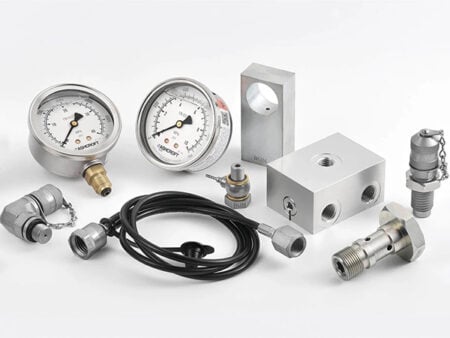
Pressure measuring fittings come in various designs tailored for specific applications, each with unique features:
1. Quick couplings
·Characteristics: Designed for rapid connection and disconnection.
·Applications: Used in hydraulic systems requiring frequent assembly and disassembly, enhancing efficiency through simple insertion and removal.

2. Threaded joints
·Characteristics: Secured by threaded connections, suitable for high-pressure environments.
·Applications: Common in systems needing robust connections that can withstand high pressure and vibration.
3. Push-in fittings
·Characteristics: Connect via a simple push-in operation.
·Applications: Ideal for low and medium pressure systems, though caution is needed in high-pressure environments.
4. Flanged joints
·Characteristics: Provide high-strength connections.
·Applications: Used in heavy machinery and high-pressure pipelines due to their strong connections and excellent seismic.
5. Welded joints
·Characteristics: Connected by welding, suitable for high-pressure and high-temperature conditions.
·Applications: Preferred in environments demanding high connection strength, despite more complex installation and maintenance.
When selecting a pressure measurement fitting, a number of factors need to be thoroughly evaluated to ensure optimum performance and long-lasting reliability in a particular application. The main factors to consider include the following:
1. Pressure range
According to the working pressure of the hydraulic system, select the coupling that can withstand the corresponding pressure. Over-pressurization can lead to damage to the couplings and even safety accidents.
When choosing, you need to carefully check the maximum working pressure of the hydraulic system and the rated pressure of the pressure measurement joints to ensure that the joints can withstand the working pressure of the system.
2. Temperature range
Hydraulic systems may operate in high or low temperature environments, requiring the selection of fittings with good temperature resistance.
Pressure gauge fittings made of different materials have different performance in different temperature ranges, and you need to choose the right fittings according to the operating temperature of the hydraulic system.
3. Media type
According to the medium used in the hydraulic system (such as oil, water, etc.) to select the appropriate joint material to prevent corrosion and media leakage.
Different media have different requirements for pressure measurement joint materials, such as oil-based hydraulic media suitable for the use of metal joints, while water-based hydraulic media may require the use of corrosion-resistant materials.
4. Connectivity
According to the design and installation requirements of the system to choose the appropriate connection, such as quick couplings, threaded fittings or push-in fittings. The selection needs to take into account the connection method and operating habits of the hydraulic system to ensure that the fitting is easy to install and use.
In order to ensure that the gauge fitting will operate consistently and efficiently in the hydraulic system for a long period of time, proper installation methods and a systematic maintenance program are essential. Below are some detailed recommendations:
1. Installation steps
– Ensure that the hydraulic system is fully pressurized before installation.
– Select the appropriate installation tool according to the type of fitting.
– Ensure that fittings are clean and free of foreign matter where they connect to the system.
– Install the fitting correctly according to the product instructions to ensure a good seal.
– Pressure test after installation to ensure that the joints are leak-free.
2. Maintenance methods
– Regularly check the sealing of the joints and replace the seals when leaks are detected.
– Clean fittings regularly to prevent dust and contaminants from entering the system.
– Regularly lubricate frequently used joints to ensure smooth operation.
– When used under high pressure or in harsh environments, periodically check the fittings for wear and replace damaged fittings in a timely manner.
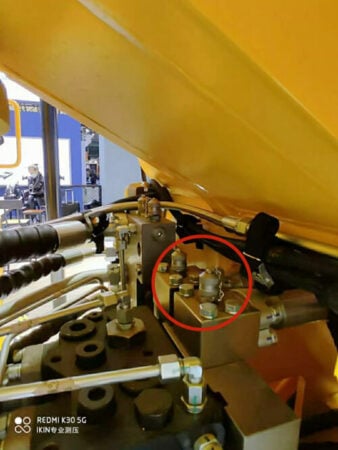
In the hydraulic system, the pressure measuring fitting is not only widely used, but also plays a vital role. Through the following case studies of several practical applications, we can have a clearer understanding of the key role and significant results of the pressure measurement joints in various industries.
#Construction machinery
A major construction machinery company has introduced a new type of pressure measurement joint in its excavator hydraulic system. Made with high-precision sensors and durable materials, the connector provides excellent measurement accuracy and durability.
By using this pressure fitting, the company monitors the hydraulic system pressure in real time to ensure that the equipment operates within the optimal pressure range, improving efficiency and safety.
In addition, the corrosion and pressure resistance of the couplings significantly reduces maintenance costs, extends service life, and improves overall productivity.
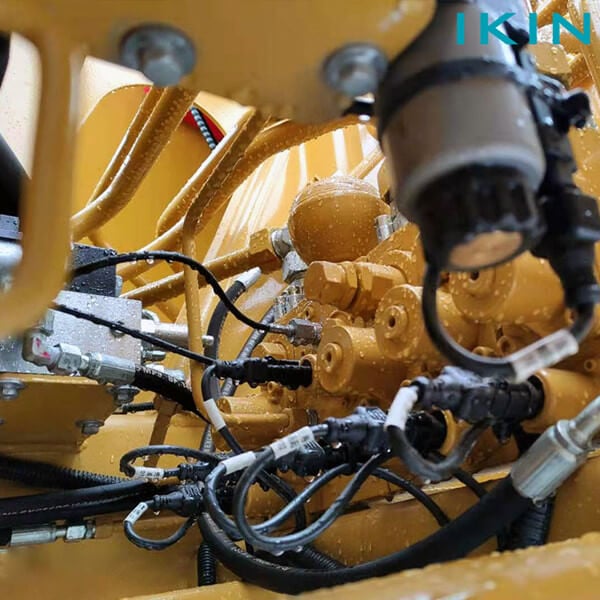
#Oil and gas
In the oil and gas industry, a large oilfield project has adopted a high-pressure and corrosion-resistant pressure measuring fitting to monitor the pressure of high-pressure pipelines. The application of this pressure fitting effectively prevents safety incidents such as pipeline leaks and explosions, and improves the safety and productivity of the project.
Installed at key pipeline nodes, these couplings transmit real-time pressure data to the monitoring center, helping operators adjust system parameters in a timely manner to prevent potential hazards.
#Industrial equipment
An industrial equipment manufacturing company has installed a variety of pressure measurement fittings in its hydraulic presses to monitor the pressure of the equipment’s hydraulic system.
Through accurate pressure monitoring and data analysis, the company identified and resolved potential problems in the hydraulic system and made timely adjustments, significantly improving the equipment’s operational stability and service life.
The real-time data provided by the pressure measurement couplings supports predictive maintenance, reduces equipment failure rates and downtime, and improves overall productivity.
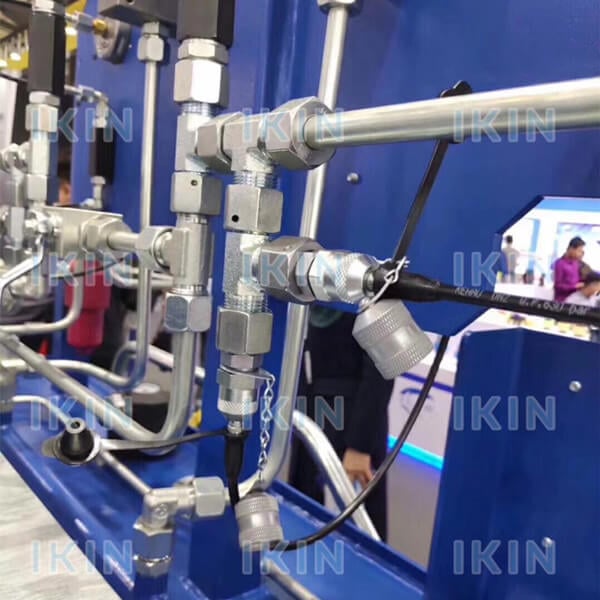
Pressure gauge fittings play a vital role in hydraulic systems, and their proper selection, installation and maintenance are the keys to ensuring the safe and stable operation of hydraulic systems. By understanding the different types of pressure measuring fittings and their application scenarios, and mastering the selection and maintenance methods, the operating efficiency and safety of the hydraulic system can be effectively enhanced.
We hope this article can help you better understand the basics and practical application scenarios of pressure measuring fittings, as well as grasp the key methods of selection and maintenance. We hope this information will be helpful to hydraulic system engineers and technicians in their work to enhance the performance and reliability of hydraulic systems. If you have any questions or need further guidance, please feel free to contact a professional.
what is the difference of hydraulic test couplings in the market?
Top 3 Manufacturer in China
hydraulic test fittings supplier
SGS Approved
what is the structure of pressure test point in market?
Though pressure test point looks tiny and unnecessary, hydraulic test system will be much more convenient with it.
1. function of pressure test point
The pressure test point is mainly used to measure the pressure of the fluid system, and there is a self-sealing valve inside.
When used alone, due to the action of the spring, the leakage of the system medium can be stopped.
The self-sealing valve can be opened after being connected to the measuring hose with thimble or pressure sensor, and the system pressure parameters can be displayed by the pressure gauge or tester, which is used for system pressure detection, system debugging and fault diagnosis of high or low pressure fluid system.
When set in a special position, test point adapters can also be used for hydraulic system medium sampling, system pressure relief and system exhaust.
2. Classification of pressure test points in market
Because the pressure test point connector is specially designed for pressure measurement and high/ low flow rate fluid sampling, the design has fully considered its pressure range.
And according to different scopes of use, test points of different types and strengths have been designed, and these connectors also play an irreplaceable role in the work.
According to the different internal structure, the pressure test point structure can be divided into ball seal, piston seal and cone seal.
2.1 Ball seal structure
The ball seal pressure test coupling is mainly composed of a steel ball and a spring.
The thrust is generated by the spring pre-compression, so that the steel ball is pressed against the valve body mating surface to achieve sealing.
Features of the ball seal structure: a simple structure, a mechanical seal, not easy to age, and has good stability.
Another feature: the machining accuracy of the valve body contact surface is required to be high, the steel ball and the valve body are in line contact, and the sealing effect is average.
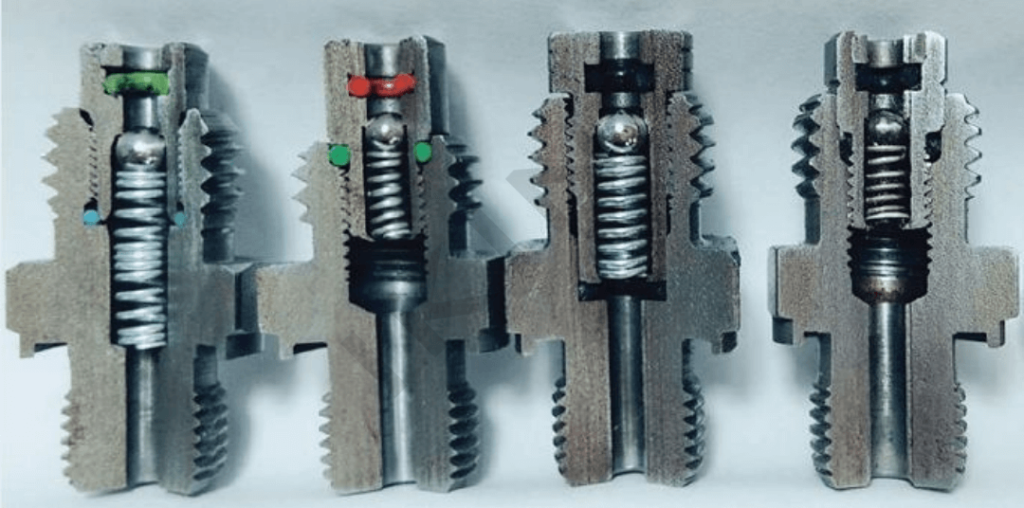
Internal structure of pressure test point with ball seal
2.2 Piston seal structure
The piston seal pressure test point adaptor is mainly composed of a piston, an O-ring and a spring. The sealing ring is in the piston groove.
Adhere to the sealing cone (radial seal) or flat surface (axial seal) through spring pre-compression thrust.
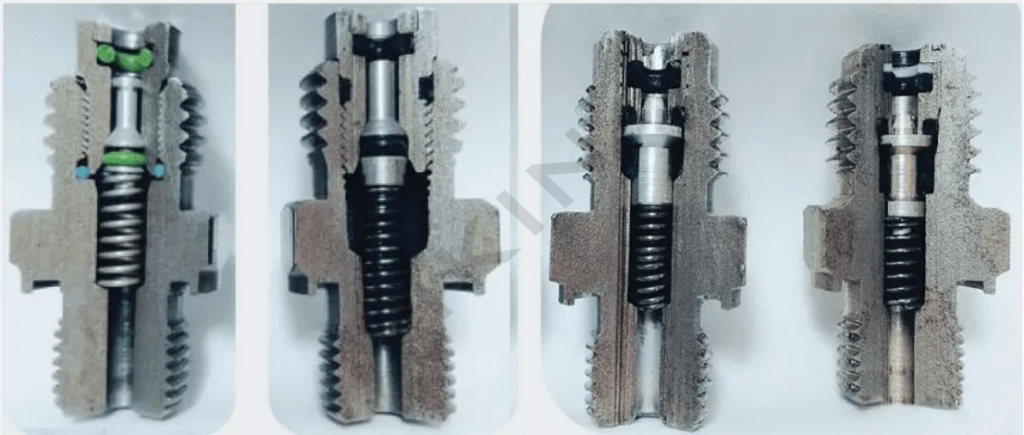
2.3 Cone sealing structure
The cone seal pressure test coupling is composed of a cone valve core, a cone seal and a spring.
The conical seal and the conical valve core are tightly attached to the conical mating surface of the valve body under the pre-compression thrust of the spring.
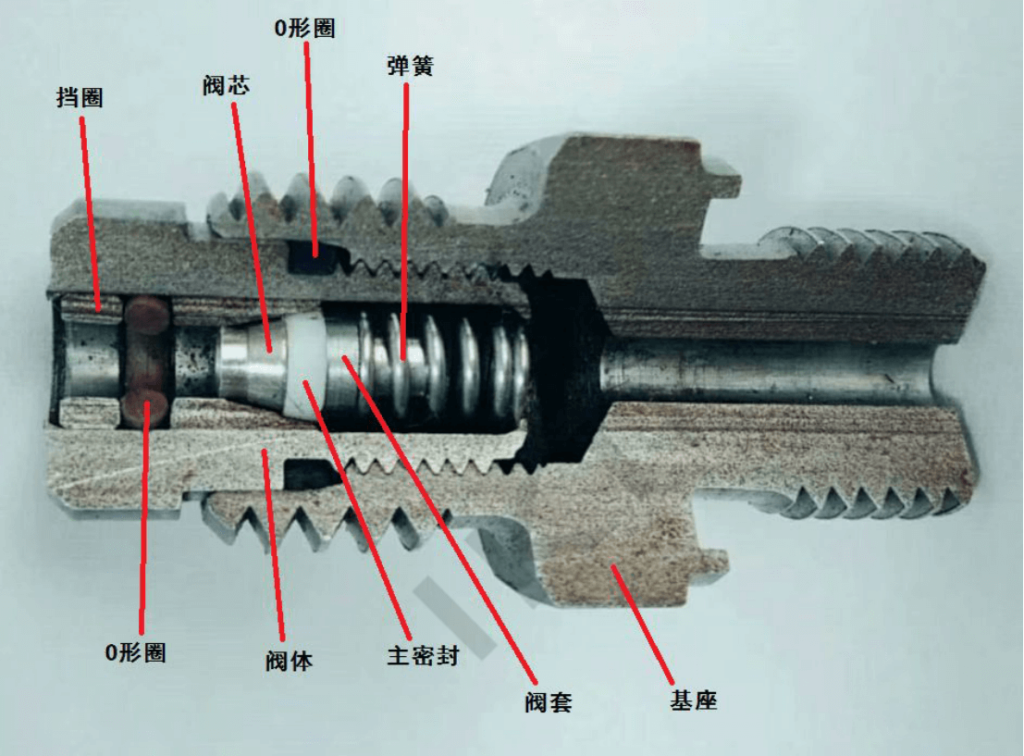
Internal structure of cone-sealed pressure test
Cone seal features: the conical valve core and the conical seal work together, the sealing is surface contact, the sealing effect is better, and the gas and liquid are universal;
The spring is integrated in the valve body and is not easy to loosen; but the processing accuracy of the valve body and spool is relatively high.
As a commonly used equipment in the industry, fluid pressure test points are known for their wide practical range and convenient connection and sampling. Especially when the fluid is used under high pressure and flow rate, it has many advantages and many conveniences.
So what are its advantages:
Advantage 1: The operation can be completed manually under high pressure
When the fluid is under high pressure, if the operation is careless, the higher pressure can easily cause the liquid to leak out, causing irreversible process accidents, and even life-threatening.
However, the pressure test hose connector fully takes this into consideration, so that the connector can be disconnected and closed simply by using both hands under high pressure.
Advantage 2: Small structure
Because sampling and pressure test locations are often not fixed, work needs to be done according to specific conditions and requirements.
Therefore, the compact shape brings great convenience in carrying and operating engineering.
Then there is the ability to easily connect with the meter.
Because of its unique purpose, the connection with the instrument is fully considered in the design, so the operation is easy and the connection is firm.
3. Summary
The test point adapters is a very small component in the hydraulic system, but it plays an important role in the debugging, testing and diagnosis of the hydraulic system.
Through the pressure gauge or sensor, various pressure tests can be completed without disassembly and assembly and zero leakage.
Reasonable setting of pressure test point fittings in the hydraulic system brings a lot of convenience to debugging, testing and diagnosis.
In order to ensure a good application effect, it is indeed very important to choose a high-quality and reliable product.
The current evaluation of the pressure test point is very good, and the product design is excellent.
While ensuring large flow output, it can also ensure strict quality screening standards, so that the products can have a better use value.
Judging from the current situation, pressure test coupling are mainly also flexibly applied to various fluid systems.
However, the internal wiring of different fluid systems and the size of the connectors are different, so you need to do the flow control in advance before purchasing the corresponding pressure test point.
If the size does not match, it is also a troublesome thing.
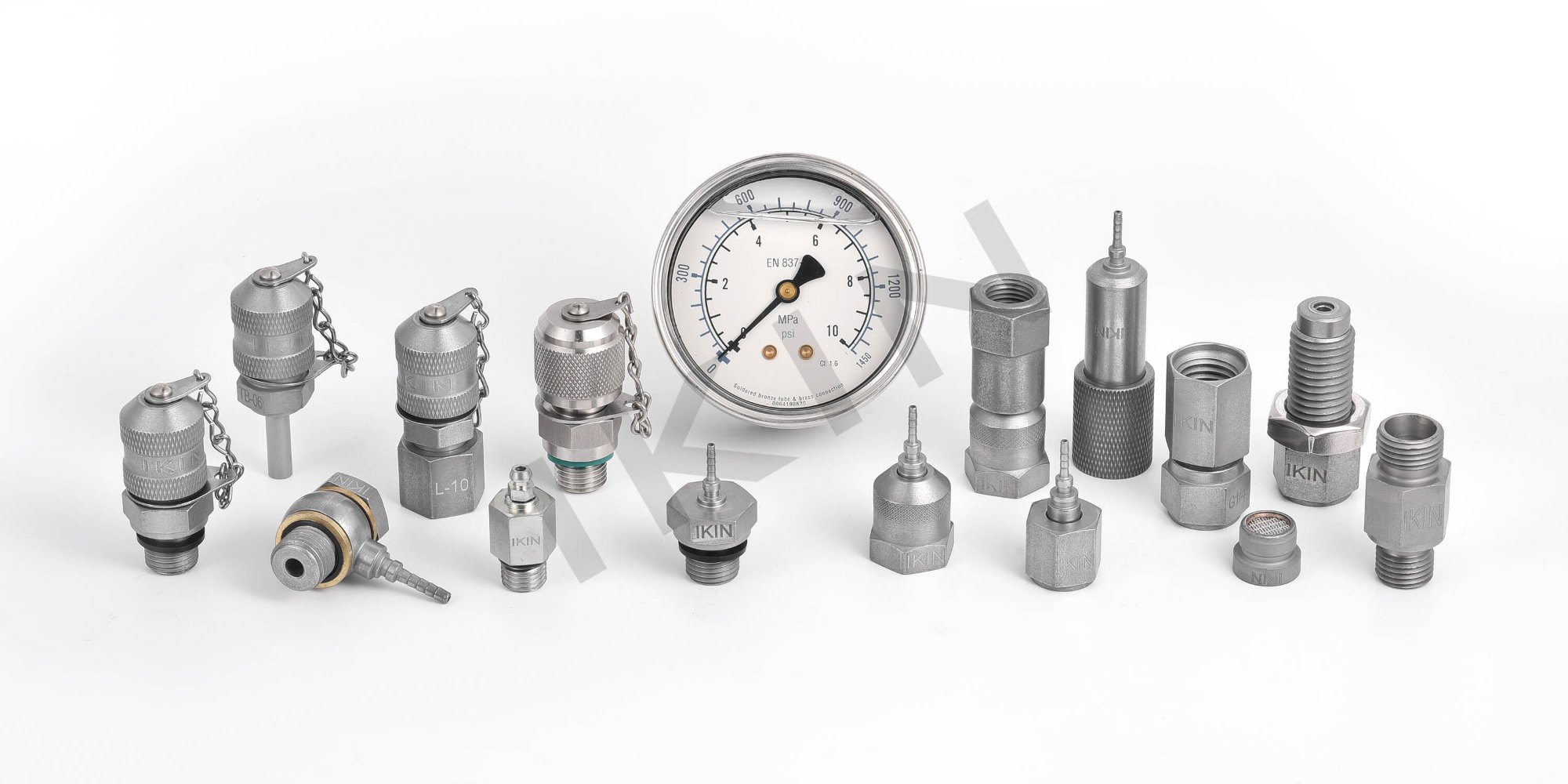
Ikin Fluid
—— Top 3 manufacturer in China, specialize in hydraulic test point
Benefits You Can Find In Ikin
factory Price and low moq
reliable quality, supplier for Eaton, Hawee and so on
100% leakage Inspection Before finished
3 years warranty
10 working days for bulk shipping
match other fittings like minimess, stauff and so on
cone seal design structure, stable and long life
Get Your Free Sample
in 2 days
*We respect your confidentiality and all information are protected.
Ikin Fluid attended the 2020 Bauma China
Look back the 2020 Bauma China, Shanghai
On November 27th, the 4-days Bauma China Shanghai 2020 ended successfully.
Despite the impact of the covid pandemic, as well as four consecutive days of rainy, enthusiasm of the construction machinery industry still can not be stopped.

The major construction machinery companies showed their abilities and the creativity of the event dominated the audience.
The exhibitors showed more pleasantly surprise, with many bright spots.
Sany's "Online Bauma Show" becomes a new IP 23.5 billion signed orders!
The debut of the new product witnessed the strength of the “Trinity Steel Corps”.
- C10 series new pump truck with comprehensive regulations and the longest boom
The new hundred-ton large excavator SY1250H
46 models of Sany’s latest equipment from 25 tons to 800 tons cranes
Unmanned road roller without cab
The world’s first plug-in hybrid paver
The world’s first mass-produced electric excavators and other dozens of the most cutting-edge products, all in full attack, stunning the audience!
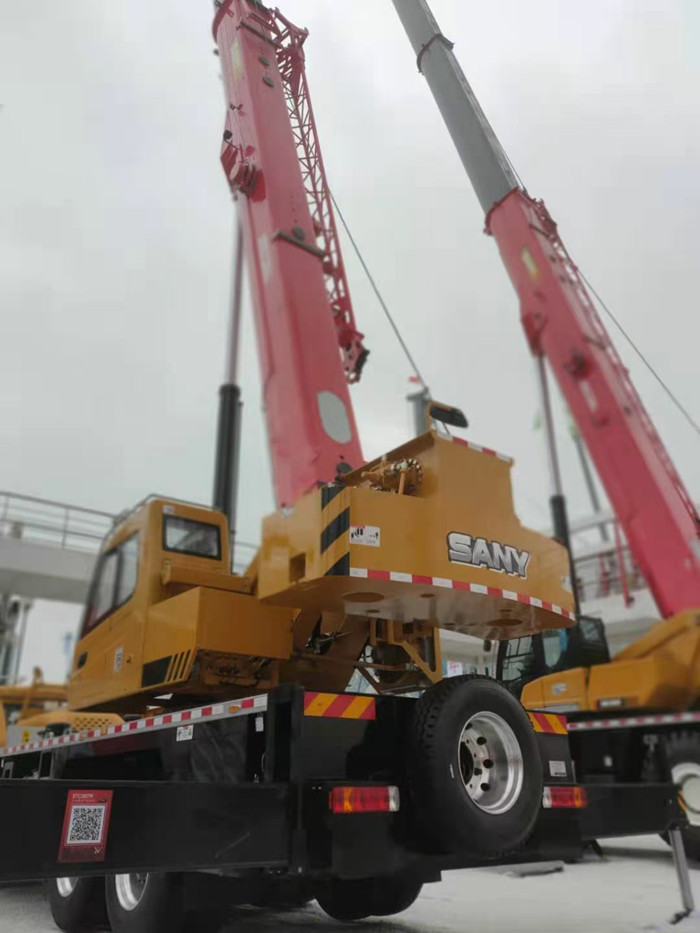
And the below picture shows IKIN’s test coupling used in the Sany crane hydraulic system on the Bauma Exihibition.
The following is the live shooting at Sany’s booth. It is our IKIN hydraulic test coupling used on Sany crane.
We IKIN FLUID are serious at designing and manufacturing hydraulic test points.
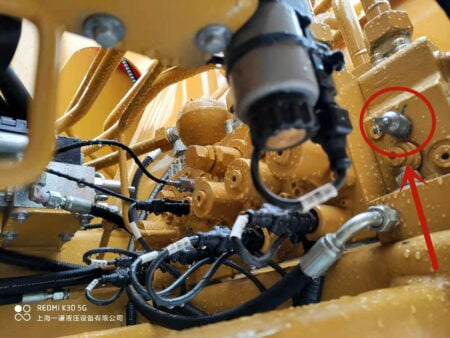
XCMG "Steel Corps" convergence Full of "Chinese Wisdom"
XCMG Group launched the global digital spare parts service information system (XCMG-Global Service System, referred to as X-GSS)”.
Promote digital, intelligent, and unmanned transformation and upgrading.
Again, IKIN FLUID pressure check test point is used in the XCMG’s booth.

Zoomlion signed over 9 billion RMB on the first day, the new product witnessed the world's most.
- Zoomlion’s world’s highest self-propelled straight arm aerial work platform ZT68J
- Zoomlion exhibited many “black technology” products
- New high-tech products of Zoomlion,all demonstrate strong R&D and innovation capabilities.
The following picture shows the application of IKIN pressure test points, taken at the booth of Zoomlion:
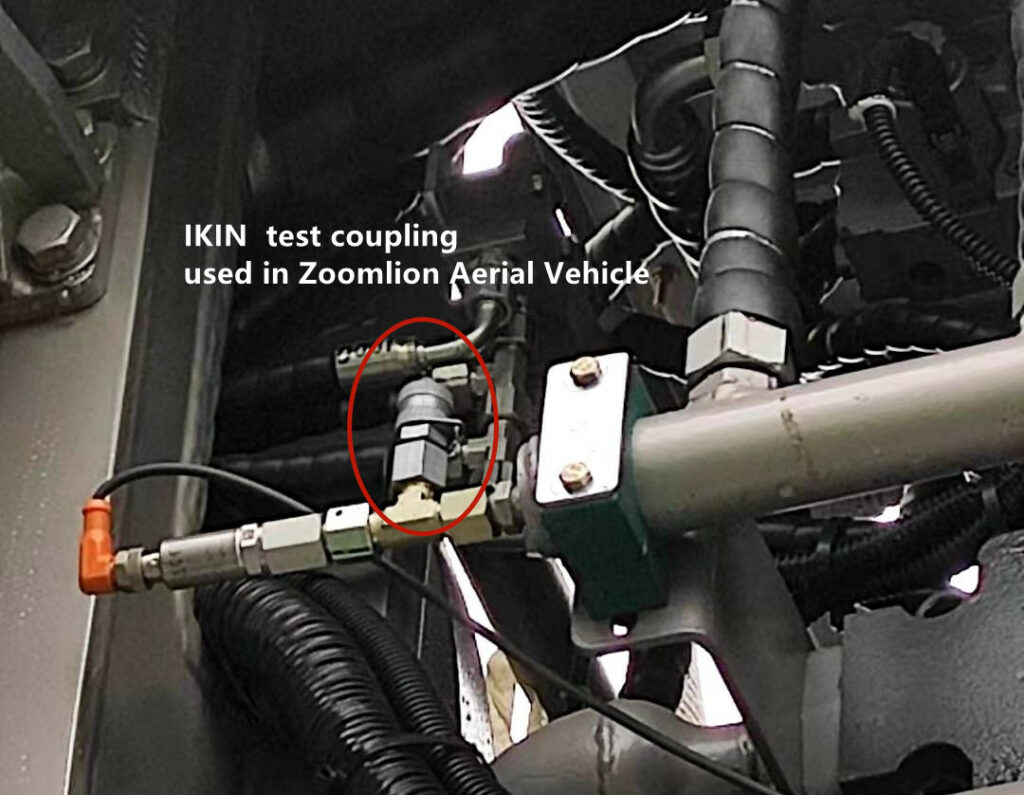
In addition, below is the pressure test coupling used in many other customers booth exhibits.
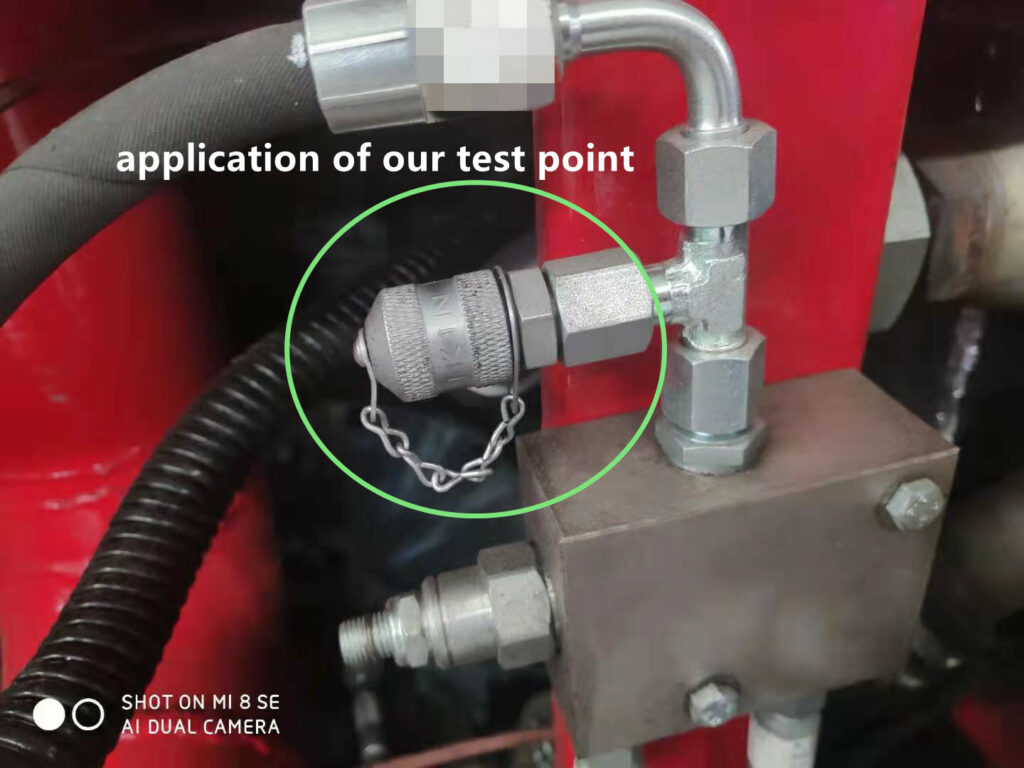

Affected by the epidemic, the number of customers to participate in the show than in 2018 year has decreased, but many customers still come to the party.
The professional exhibits, with a sense of science and technology carefully prepared by IKIN, have attracted the attention of many customers.
Booth of IKIN


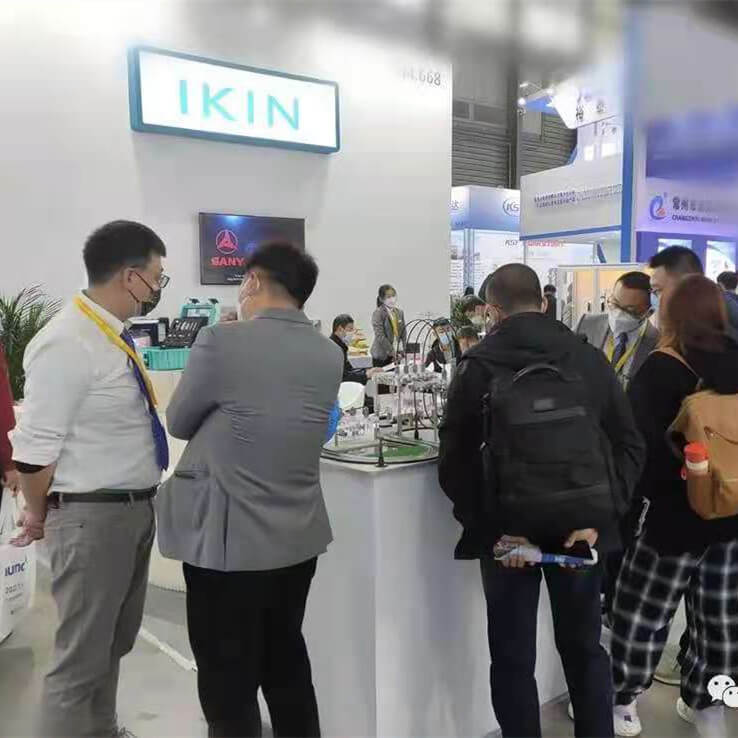
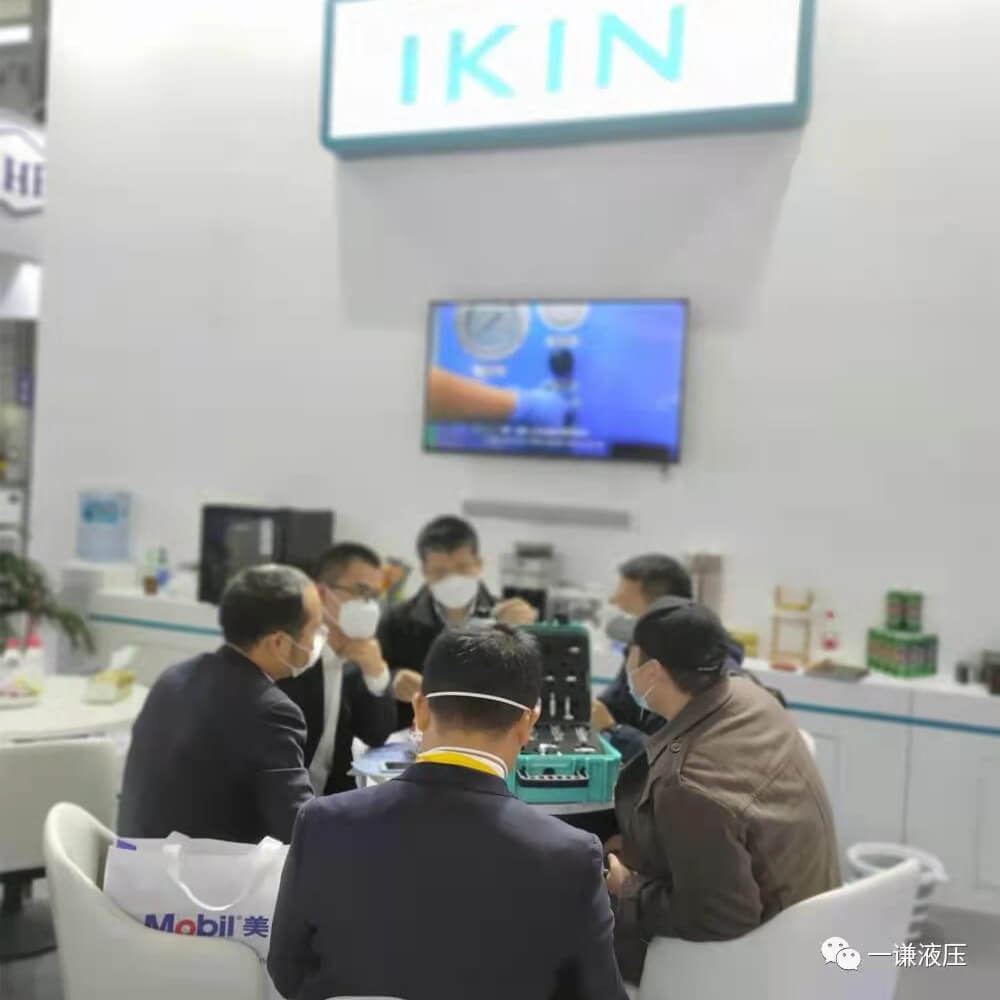
- China manufacturer
- supplier for Sany Crane, XCMG Group, Zoomlion, GE and so on inbroad
- specialize in hydrauli test fittings
- reliable, high cost performanc
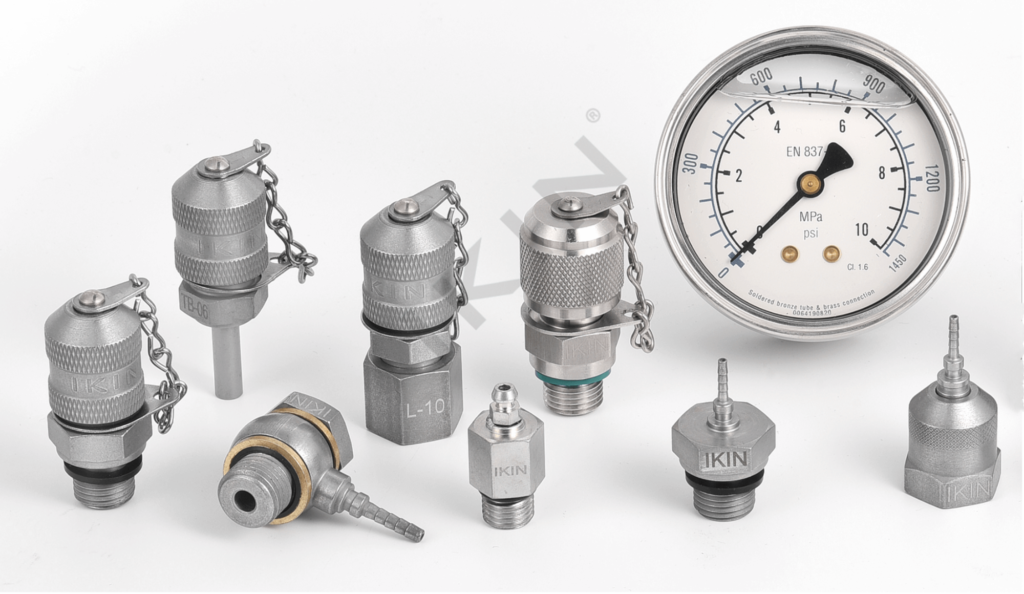
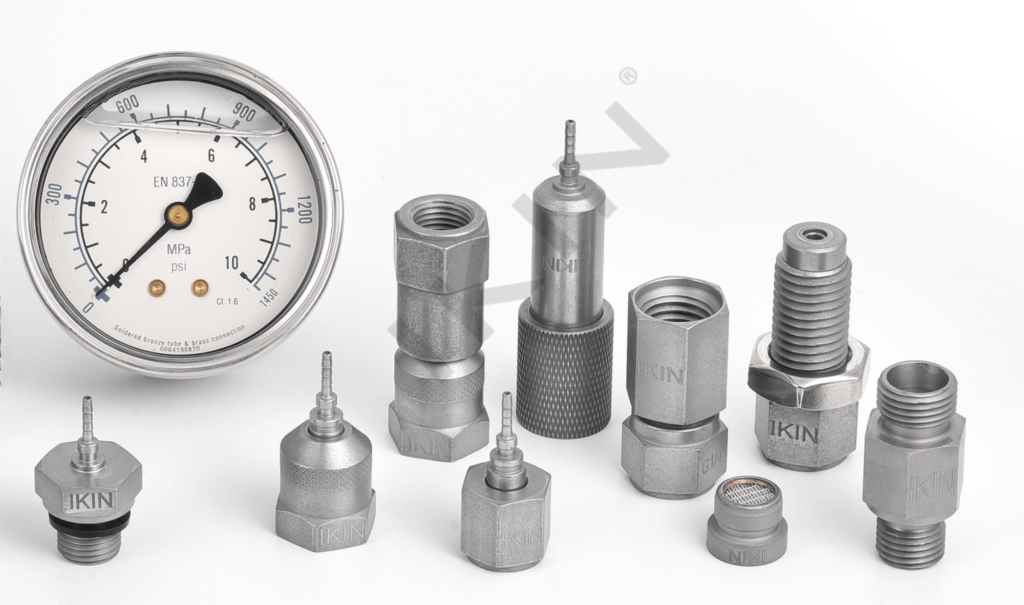
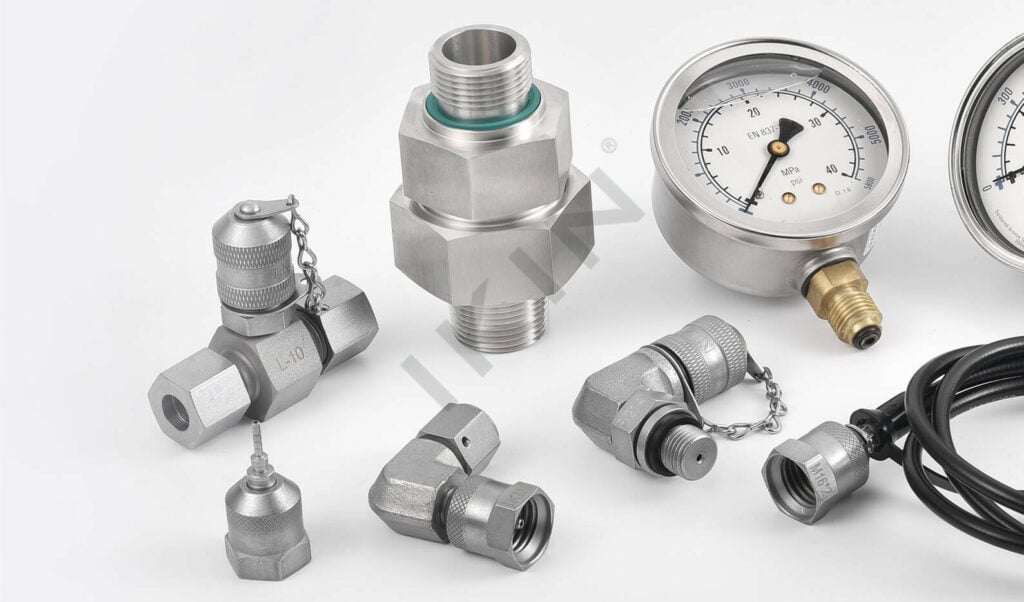
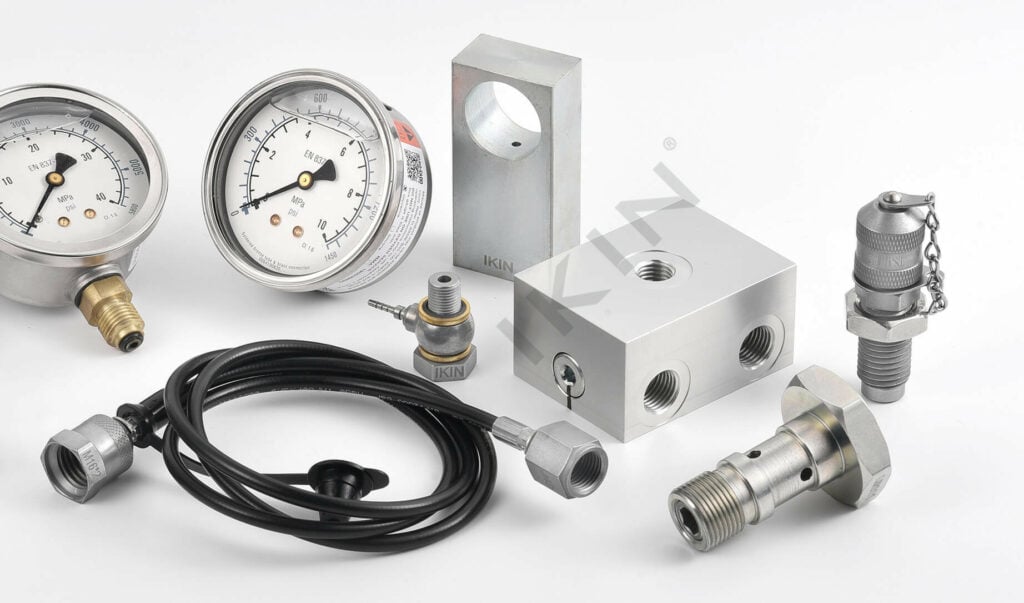
what are the types of Hydraulic hose fittings and failure analysis?
Top 3 Manufacturer in China
hydraulic test point hose supplier
SGS Approved
what are the types of Hydraulic hose assembly and fittings?
With the rapid development of China’s construction machinery, the reliability of hydraulic hose assemblies has become one of the most concerned issues in the industry.
The hydraulic hose assembly is a basic element in the hydraulic transmission system. The quality of the hose assembly directly affects the performance of the hydraulic system and the main engine. Part of the failure of the hose assembly comes from the structure of the joint core.
The hose connector core is mainly divided into two parts, one is the connection structure, mostly based on SAE standards, ISO standards and KES standards; The other part is the structure of the crimping part (tail structure), which is matched with the outer jacket and the inner and outer rubber layers of the hose to form a reliable crimping deformation to meet the performance of the hose assembly.
If the structure of the joint core crimping part is unreasonable in the design of different types of hoses, product quality problems will occur to a large extent.
Therefore, the types of (designed) joint cores selected for hoses in different working environments are also different, and a reasonable design can avoid or reduce the occurrence of failures.
1. Types and characteristics of hose fittings
Throughout the entire hose assembly industry, there are mainly two types of reliable connections between hose joints and hoses: full withhold hose joints and detachable hose joints.
The full crimping joint is a process in which the eight-part crimping module of the crimping machine uniformly squeezes the hose joint to a certain extent after assembling the joint core, hose and outer jacket, so that the hose joint and the hose become a whole.
The detachable hose connector compresses the hose through the connector core with the outer cone and the connector core, so that the hose is close to the inner cone of the connector sleeve, forming a connection with a greater binding force.
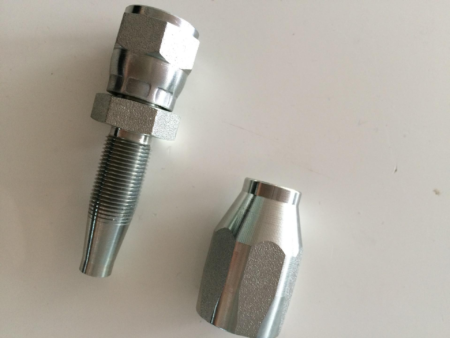
1.1 Hose crimping form and characteristics
The type of withholding of the hose mainly depends on the type of hose (or the size of the inner and outer rubber) and the pressure environment of the hose assembly.
It is mainly divided into three categories: non-peeling rubber crimping, peeling outer rubber crimping, and inner and outer rubber peeling crimping.
The characteristics of each type are:
(1) Non-peeling and crimping: The inner and outer rubber of the hose does not need to be stripped, and the product can be completed by crimping after the hose is installed. The processing technology is simple.
This type of crimping is often used for steel wire braided hoses with relatively thin outer rubber layers such as GB/T3683, EN853 and SAE standards.
(2) Stripping and crimping: It is necessary to strip off the outer rubber layer of the hose to a certain length (the outer rubber layer is thicker), which is used to better make the steel wire reinforcement layer contact with the tooth groove of the jacket.
When the jacket shrinks and deforms under external force, it will firmly buckle the steel wire, thereby preventing the joint from pulling out when subjected to high pressure impact.
This type of crimping is mainly applicable to steel wire wound hoses such as GB/T10544, EN856, and SAE standards.
(3) Internal and external rubber stripping and crimping: the inner and outer rubber layers need to be stripped to a certain length (the thickness of the inner and outer rubber), the steel wire layer and the inner rubber layer are extruded into a wave shape, generally suitable for GB/T10544, EN856-R13, R15, etc. Specifications (32 or more including 32) ultra-high pressure steel wire spiral hose.
1.2. Withholding type hose connector
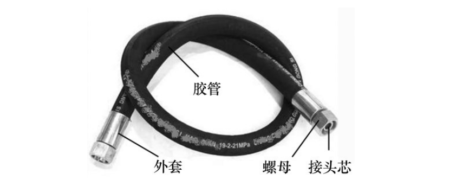
Withholding type hose joint is mainly composed of joint core, outer jacket (nut is an optional part) and other parts.
1) Joint core materials, types and characteristics
Commonly materials used for joint cores are 20, 35, and 45 steels. For straight joint cores, 35 and 45 steels are often used, which have strong resistance to deformation. Considering the manufacturability of bending joint cores, 20 or 35 steels are generally used.
With the popularization of hot bending technology, 35 and 45 steels can also be used for elbow joint cores.
The structural characteristics of the joint core are closely related to the hose crimping form, and according to the regularity of the structure, the types of joint cores are roughly divided into: zigzag structure, rectangular structure, internal locking structure, etc.
(1) Sawtooth structure joint core, commonly known as barbed type, is mainly composed of sawtooth grooves, and the angle between the hypotenuse and the axis is generally not more than 20°.
The top of the serration is arc-shaped or flat, and the plane and the short side of the serration are smooth rounded corners (0.2~0.5mm) to prevent damage to the inner rubber layer of the hose during assembly and crimping.
The joint core of this structure has strong sealing and pull-off resistance, and is mainly used for steel wire-wound rubber hoses.
(2) Rectangular structure joint core: mainly composed of several rectangular grooves, 5~7 groove bodies form a sealing groove, and the groove depth is generally 0.3~0.6mm.
The transition surface between the top of the groove and the bottom of the groove is generally smooth with rounded corners, with a radius of 0.1mm~0.3mm.
Prevent damage to the inner rubber layer of the hose during assembly and crimping. The overall structure is simple, with good sealing performance, but low pull-out resistance. This structure is often used for resin hoses, steel wire braided hoses and other types of hoses.
Commonly materials used for joint cores are 20, 35, and 45 steels. For straight joint cores, 35 and 45 steels are often used, which have strong resistance to deformation. Considering the manufacturability of bending joint cores, 20 or 35 steels are generally used.
With the popularization of hot bending technology, 35 and 45 steels can also be used for elbow joint cores.
The structural characteristics of the joint core are closely related to the hose crimping form, and according to the regularity of the structure, the types of joint cores are roughly divided into: zigzag structure, rectangular structure, internal locking structure, etc.
With the rapid development of China’s construction machinery, the reliability of hydraulic hose assemblies has become one of the most concerned issues in the industry.
The hydraulic hose assembly is a basic element in the hydraulic transmission system. The quality of the hose assembly directly affects the performance of the hydraulic system and the main engine. Part of the failure of the hose assembly comes from the structure of the joint core.
The hose connector core is mainly divided into two parts, one is the connection structure, mostly based on SAE standards, ISO standards and KES standards; The other part is the structure of the crimping part (tail structure), which is matched with the outer jacket and the inner and outer rubber layers of the hose to form a reliable crimping deformation to meet the performance of the hose assembly.
If the structure of the joint core crimping part is unreasonable in the design of different types of hoses, product quality problems will occur to a large extent.
Therefore, the types of (designed) joint cores selected for hoses in different working environments are also different, and a reasonable design can avoid or reduce the occurrence of failures.
With the rapid development of China’s construction machinery, the reliability of hydraulic hose assemblies has become one of the most concerned issues in the industry.
The hydraulic hose assembly is a basic element in the hydraulic transmission system. The quality of the hose assembly directly affects the performance of the hydraulic system and the main engine. Part of the failure of the hose assembly comes from the structure of the joint core.
The hose connector core is mainly divided into two parts, one is the connection structure, mostly based on SAE standards, ISO standards and KES standards; The other part is the structure of the crimping part (tail structure), which is matched with the outer jacket and the inner and outer rubber layers of the hose to form a reliable crimping deformation to meet the performance of the hose assembly.
If the structure of the joint core crimping part is unreasonable in the design of different types of hoses, product quality problems will occur to a large extent.
Therefore, the types of (designed) joint cores selected for hoses in different working environments are also different, and a reasonable design can avoid or reduce the occurrence of failures.
(3) Internal locking structure joint core, also known as anti-pull-out structure.
This type of structure is specially designed to prevent the hose from being pulled out of the hose joint, and the tightness is ensured by the rectangular structure.
Therefore, the inner locking structure joint core is actually a combination of the anti-pull-out structure and the rectangular structure.
This kind of joint has the characteristics of high reliability and long service life. It is mainly used for ultra-high pressure and large diameter steel wire winding hose and dynamic steel wire winding hose assembly under harsh working conditions.
2) Outer cap material, type and characteristics
The material of the outer jacket is generally 20 steel, and the good plastic deformation of the material is used to make the outer jacket tooth extruded rubber tube and the joint core sealing fit.
There are also many types of outer caps, mainly for different joint cores, different working environments, different specific working conditions, and different structural forms required.
Usually the inner side of the jacket is made up of some grooves or serrations. There are square grooves, trapezoids, zigzags, etc., which need to be used in conjunction with different types of joint cores.
The commonly used structure types of outer caps are roughly divided into the following three types:
(1) Wave-shaped tooth groove jacket. The outer surface of the wavy jacket is mainly a smooth cylinder, and the angle between the hypotenuse of the inner tooth and the axis is 25°~45°.
The radial side and the hypotenuse are connected by rounded corners of 0.2~0.5mm, generally composed of 3~5 internal teeth. Mainly suitable for non-peeling medium and low pressure hose assemblies, such as resin tubes and steel wire braided hoses; It can be used in conjunction with sawtooth structure and rectangular structure joint core, with weak pull-out resistance and simple processing technology.
(2) Trapezoidal tooth groove jacket. The outer surface is a smooth cylinder, and the inner surface is a groove with a certain number of trapezoidal teeth.
The angle between the hypotenuse and the axis is 25°~45°, and each serration is a rectangular groove. The top of the serration is a plane with a width of 1 to 2mm, and the sharp corners are transitioned with a rounded corner of 0.2mm.
It can be used in conjunction with a rectangular structure joint core to form an effective pull-out resistance, suitable for stripping medium and high pressure braided pipes and winding pipes.
(3) Compound alveolar cover. The outer surface is a T-shaped groove corresponding to the internal tooth dislocation, and the inner surface is a groove with a certain number of bilateral trapezoidal teeth.
It is suitable for use with the inner locking structure joint core and is used for ultra-high pressure and big flow rate hose assembly.
With the gradual development of large-scale construction machinery, the hydraulic system is also constantly developing in the direction of high pressure, and the application of this structural form is becoming more and more extensive.
2. Selection of the amount of joint crimping
According to different hose types and joint types, the appropriate crimping amount is also a key factor to ensure that the hose assembly is trouble-free.
The amount of crimping directly affects the sealing performance, pull-off strength and service life.
Generally, when judging the quality of the crimping deformation, see whether the gap between the inner tooth surface of the outer sleeve and the tooth groove of the joint core is filled by the rubber tube.
Only when the deformation is satisfied can the pull-out resistance and sealing performance be guaranteed.
Generally speaking, the crimping amount of inner rubber hose such as nitrile rubber should make the inner rubber layer compression (40%~45% for steel wire braided hose, 50%~55% for four-layer and six-layer steel wire wound hose); The crimping amount of the resin tube and the PTFE hose ensures that the compression amount of the inner rubber layer is 25% to 30%.
In the case of ensuring the seal, the smaller the amount of withholding, the better. Through calculation and verification, a certain amount of withholding is selected.
3. Conclusion
The article discusses the types of joint cores and outer caps used in the withholding hose assembly.
When the hose crimping has quality problems and the types of failures.
Analyzed the reasons and how to use reasonable crimping configuration and crimping joints, in order to avoid the problem of low hose assembly performance caused by unreasonable hose crimping structure.
Effectively improve and control the reliability of the hose assembly, and also provide strong support for the rapid development of various hydraulic engineering machinery.
Ikin Fluid
—— Top 3 manufacturer in China, specialize in hydraulic test point
Benefits You Can Find In Ikin
factory Price and low moq
reliable quality, supplier for Eaton, Hawee and so on
100% leakage Inspection Before finished
3 years warranty
10 working days for bulk shipping
match other fittings like minimess, stauff and so on
cone seal design structure, stable and long life
Get Your Free Sample
in 2 days
*We respect your confidentiality and all information are protected.
How to maintain and Manage Extrusion Press Hydraulic System
How to maintain and Manage Extrusion Press Hydraulic System
Large aluminum extrusion presses can be used to produce high-specification aluminum extrusion products such as industrial profiles, rail transit profiles and large radiators.
It can be used in aerospace, rail transit, automobiles, ships, construction, machinery manufacturing, electronic power and other fields. In the working process of large aluminum extrusion press, to ensure the working accuracy and high performance, the premise is to have a certain degree of stability. Once the stability of the extruder fails to meet the production standards, the quality of the products produced will be greatly compromised. And enterprises will also suffer huge economic losses.
一. Common problems of hydraulic system of large aluminum extrusion press and their solutions
(一) Pipe leakage:
The welding position of the pipe and the flange is most likely to cause pipe leakage. In addition, the pipe flange installation surface and screw position are also extremely likely to cause pipe leakage.
The occurrence of pipe leakage is mainly caused by the loosening of the screw and pipe joints caused by long-term operation. At the same time, after the flange mounting surface seal is aging, the sealing ring will be damaged.
Improper welding caused pores and cracks, and leakage occurred. In addition, the use time was too long, the safety awareness was not strong, and timely maintenance was not carried out, which caused the situation to expand and eventually cause leakage. We can eliminate pipe vibration and improve stability by adding pipe clamps and brackets.
If the welding operation is not standardized, there are pores or cracks, we can polish in the original position, and after the debris is removed, we can weld again.
(二) Oil leakage in the cylinder:
1. The occurrence rate of oil cylinder leakage is relatively high. Due to the long-term working condition, it will inevitably cause a large amount of abrasive particles. At the same time, because the exposed position of the piston rod is exposed to the air for a long time, it is inevitable that there will be a large amount of dust and aluminum powder attached.
In such situations, a dust ring is usually used to scrape out. However, in view of the effect of the dust ring, it is difficult to completely scrape off, so that the piston rod seal is damaged, which in turn causes leakage. Therefore, two treatment methods are usually adopted for oil cylinder leakage: First, clean the oil cylinder and replace the seals; Second, confirm whether the surface layer of the piston rod is worn or not,
2. The axis of the cylinder is not parallel to the guide rail, and the error exceeds the standard range: 0.04-0.08mm/m. In turn, the end cover fixing bolts were loosened and the seal failed. Then we need to maintain parallelism and control the error within the standard range.
3. The seal is broken and the oil leakage occurs due to the back pressure and the pressure setting is too high. In turn, the seal is exposed to excessive pressure and the seal is broken. This requires resetting the hydraulic system pressure and testing the hydraulic control valve components.
4. The seals are severely worn and fail because the hydraulic oil is severely polluted and produces a lot of impurities. When the oil temperature is at a high temperature for a long time, the hydraulic oil is gradually oxidized, resulting in the production of colloidal deposits. When the oil temperature is in a low temperature state for a long time, the elasticity of the seal will be lost. The aging of the seal is caused by the accumulation of a large amount of oil residue.
Then we need to strengthen the management of hydraulic oil and strictly control the intrusion of pollution sources; Confirm the working condition of the cooling system of hydraulic equipment and ensure its normal operation. The most suitable temperature is 30-45℃.
5. When the appropriate seal is not selected for sealing treatment, when selecting the seal. In order to take into account the material, model and roughness of the seal, oil leakage occurs. Therefore, when selecting seals, carefully identify the characteristics of the seals and select the corresponding reasonable seals.
(三) Leakage of control valve components:
Internal leakage is the most common in leakage of control valve components. The root cause of internal leakage is the large accumulation of hydraulic impurities, which in turn blocks the control valve components; In addition, excessive wear of the valve core and improper closing can cause leakage.
Excessive pressure will cause hydraulic clamping of the spool, which will also cause leakage. It is recommended to clean the control valve repeatedly after disassembling, or to polish the control valve components. In order to improve its accuracy and restore it to its original appearance.
(四) Solenoid valve failure: Solenoid valve failure can be divided into the following types:
1. The spool does not move: (1) Electromagnet failure, combined with vibration and magnetic field detection, it can be seen that the spool does not move; (2) The valve core is clamped, the oil changes, and the return spring is faulty. After vibration detection, the valve core stuck failure can be seen;
2. Large pressure loss: (1) The flow is too large and the size is wrong, which can be seen by joint inspection of vibration and magnetic field; (2) The spool does not move in place, and the spool jamming fault can be seen through vibration detection;
3. Magnetic flux leakage: Defects appear on the surface of the electromagnetic coil, which can be seen by magnetic field detection.
4. Shock (vibration): The spool closing speed is too fast, and the screws are loose, which can be seen by vibration detection.
In view of the causes of the above problems, take corresponding measures to solve the problem.
二. Maintenance and management of hydraulic system of large aluminum extrusion press
(一) Draw up daily maintenance plan
(1) For some equipment exposed to the air for a long time, clean it regularly to keep the exposed parts of the equipment clean and free of impurities;
(2) Keep the operating environment clean and tidy to avoid the intrusion of dust and debris and pollute the hydraulic system;
(3) Carry out patrol inspections at any time where the oil leakage rate is relatively high, and once found, take corresponding measures to solve them immediately;
(4) Standardize the inspection process. Delineate the inspection route and the highest part of the oil spill point. After a certain stage of the inspection work is completed, it shall be handed over with the staff of the next stage, and the work progress of the previous stage shall be explained in detail;
(5) Record the original operating status in detail. Understanding the normal working conditions of the hydraulic system can help to discover and solve problems in time during the inspection process, improve work efficiency, and avoid safety risks.
(二) Develop a regular maintenance and inspection system and schedule a date to calibrate various instruments of the hydraulic system. Ensure that the meter is working properly and has a high degree of accuracy.
At the same time, the hydraulic system should be pressure tested to set a reasonable pressure value to maintain normal temperature. In order to avoid pressure imbalance, the temperature is too low or too high, resulting in leakage. Regularly clean and replace the filter element to determine the composition of debris and hydraulic oil pollution.
Confirm the degree of wear and wear of the hydraulic system, and sample and test the hydraulic oil of the extruder every three months. Check hydraulic oil viscosity, acid value, moisture, particles and other items so that reasonable measures can be taken to solve them.
三. Conclusion
Through analysis, it can be confirmed that the hydraulic system leakage of the aluminum extrusion press is mainly caused by the lack of stability of the hydraulic system. So we have to take corresponding measures.
However, solutions are always attributable to remedial measures, and cannot have a preventive effect.
Therefore, it is of great significance to take necessary hydraulic system maintenance and management in daily work.
valves flanges fluid design products hydraulic flange fittings bspp hydraulic fittings valve flanges quick disconnect couplings fluid valve american fluid power quick connect couplings hydraulic test fittings hydraulic pressure test fittings hydraulic test hose hyd test fittings hydraulic test port fittings cat hydraulic test fittings john deere hydraulic test fittings hydraulic test gauge fittings hydraulic test hose fittings hitachi hydraulic test fittings jcb hydraulic test fittings jic hydraulic test fittings hydraulic test fittings kit komatsu hydraulic test fittings metric hydraulic test fittings hydraulic test point fittings hydraulic test point connectors caterpillar hydraulic test port fittings parker hydraulic test port fittings parker hydraulic test fittings parker hydraulic test fittings stauff hydraulic test fittings hydraulic test tee fittings volvo hydraulic test fittings pressure gauge connection hydraulic fluid test point parker fittings connecting threads test point hydraulic test port fittings hydraulic coupling and hose Test Coupling pressure test point hydraulic accessories Hose Test Assemblies test point fittings test Point Hoses pressure gauge fittings Test Couplings for Pressure Checking
What is the Application of Hydraulic Rotary point
What is the Application of Hydraulic Rotary point
Hydraulic power system is widely used in the industrial field by virtue of its many advantages. When the rotating equipment needs to use hydraulic medium as the transmission power, there are strict requirements on the pressure and control accuracy of the hydraulic medium, usually a pressure above 30MP, and reliable operation.
For the development and application of rotary points, it is necessary to simplify the structure of the equipment while achieving a better conversion function. The most extensive and typical application of hydraulic rotary points is in the hot-rolled wide strip steel coilers of steel rolling equipment. And on the expansion and contraction cylinders of uncoilers, coilers and other equipment on the cold-rolled strip production line.
1. Structural principle analysis of hydraulic rotary point
1.1 Structure and Principle
The hydraulic rotary point has two control oil ports and a drain port, which are respectively connected to the fixed pipelines of the hydraulic system. Each external pipeline is statically connected to the shell of the rotary point.
The shell of the hydraulic rotary point is fixed on the shell of the matching main equipment, and keeps relatively static with the main equipment base, connected with the main equipment through the mandrel. The clearance between the outer diameter of the mandrel and the inner diameter of the hydraulic rotary joint. The gap between the cylinder barrel and the piston is required to be the same as that of the hydraulic cylinder, generally 0.04mm~0.07mm. When conditions permit, lower the limit as much as possible. Each time the hydraulic system is started, a static pressure oil film will be formed in the matching gap, which protects the mandrel and the hydraulic rotary joint from wear and tear, and plays a role of sealing.
The rotating seal is installed on the mandrel of the equipment, and its main function is to isolate the oil inlet cavity and the oil return cavity to form two independent sealed spaces. Most of the materials are wear-resistant composite materials or metal materials. Rotary seals need to withstand high pressures above 30MP, and are required to be resistant to high pressure shocks, not easy to deform, and have small leakage. The rotary seal and the inner wall of the rotary joint are not in contact, and there is fluid friction between the two.
The vibration and impact generated by the high-speed operation of the main equipment are transmitted to the hydraulic rotary joint through the mandrel, resulting in a certain swing of the rotary joint. Two bearings are used to support the axial force and radial force generated by the swing of the rotary joint housing, and to realize the precise positioning of the equipment core shaft and the rotary joint.
The end face seal adopts a skeleton lip seal, which is used to seal the leaking oil from the rotating seal. The leaking oil pressure generally does not exceed 0.3MP. Once the leakage increases, it is easy to damage the end seal and cause the hydraulic oil to leak outside. The oil port of the rotary joint shell is butted with the oil port on the mandrel of the equipment.
1.2 Analysis of internal sealing structure
There are two main types of rotary seals for rotary points, composite seals and mechanical seals. The sealing performance of the composite material seal is relatively better, and it is used where the hydraulic cylinder has an intermediate positioning. The rotary point sealed with composite materials can make the rotary point more compact and exquisite due to the small size of the seal itself. The cost of the composite seal itself is much cheaper than that of the mechanical seal.
The composite rotary seal is composed of two parts, a combination of an outer ring made of PTFE and an O-ring made of NBR. The O-ring plays the role of supporting the outer ring, making the entire rotary seal easier to install, sliding between the outer ring and the housing of the rotary joint. The manufacture of mechanical seals is more complicated, the precision requirements are also relatively high, and the relative price is relatively high.
2. Installation and maintenance of hydraulic rotary points
When installing the hydraulic rotary point on the mandrel of the main equipment, ensure that the cavity of the rotary joint and the mandrel of the main equipment have good coaxiality. It is generally required that the coaxiality between the axis of the rotary joint and the axis of the equipment should be controlled within ±1mm/m. Out-of-concentricity will cause the hydraulic rotary point to produce relatively large radial swings during high-speed rotation. The radial force causes the rotary joint and the mandrel to slide periodically in the axial direction. Not only the dynamic oil film is destroyed and the wear of the mating surface is increased, but also the end face of the seal is worn. At the same time, the bearing can withstand greater external impact. Therefore, poor coaxiality will cause great damage to the internal rotating seal and bearings, and affect the service life.
The housing of the rotary joint is fixed to prevent it from rotating synchronously with the spindle, so as long as it can be prevented from rotating in a circle.
Do not use more constraints. Radial or axial force acting on the shell will be transmitted to the bearing of the hydraulic rotary joint and the internal rotating seal through the shell, forcing the bearing or seal to wear or damage.
When connecting external oil pipes, strictly abide by the hydraulic equipment installation specifications. In particular, it is necessary to strictly check the cleanliness of each oil port to prevent external contaminants and machined burrs from being brought into the rotary joint. Due to the complex internal structure of the hydraulic rotary joint and the small matching clearance, once external contaminants enter the hydraulic rotary joint, it is easy to cause damage to the oil film, mechanical seals and bearing jams, and serious leakage.
The skeleton oil seal of the rotary joint is used to seal the rotating mandrel, so that the leaking oil of the rotary seal is drained from the leaking oil pipe to the oil tank. The pressure resistance of the oil seal is usually no more than 3bar, so the leaking oil pipe must be returned to the oil smoothly.
During installation, the leaking oil port of the rotary joint must not be blocked. If there is a valve on the leaking oil pipe, it must be opened before the medium is introduced, otherwise the oil seal will inevitably be squeezed out. It is also not possible to incorporate the leaking oil pipe into the oil return pipe, because the pressure of the oil return pipe usually exceeds 3 bar. Do not install a filter on the leaking oil pipe. Rotary joints usually have leakage, so they can’t be used in occasions where pressure is required. The leakage of mechanical seals is greater.
Servo control can be considered when it is required to control the stroke of the hydraulic cylinder to compensate for the leakage. When the hydraulic cylinder is not positioned in the middle, the problem will be simpler, as long as the hydraulic cylinder continues to supply the medium after the hydraulic cylinder moves to the limit position.
Rotary joints are generally lubricated and cooled by medium, so it is not possible to test or drive without passing the medium. Make sure to open the leaking oil pipe after overhauling the rotary joint or related equipment. The wear or damage of hydraulic rotary joints can be estimated by measuring the leakage. The leakage of rotary joints should be monitored and tracked regularly to monitor the operating conditions of rotary joints.
3. Common faults of hydraulic rotary joints
In actual use, hydraulic rotary joints mainly have two types of faults. One fault is manifested as the internal bearing damage of the rotary joint, and the other is the external leakage of the rotary joint.
Analyze the causes of internal bearing damage, there are three main points:
1) The hydraulic oil has poor cleanliness and granularity during installation or during use, resulting in serious wear and failure of the rolling elements of the bearing;
2) When the rotary joint is installed, the installation accuracy requirements are not met, resulting in uneven force under the static load state of the bearing and excessive vibration value under the dynamic load state, causing damage to the bearing;
3) The selected hydraulic rotary joint design and manufacturing quality do not meet the requirements of the working conditions of the equipment. The reasons for leakage outside the rotary joint are:
The machining accuracy of the mating surface of the installation seal is low, which cannot meet the accuracy requirements of the seal;
The selection and installation of the seal are not suitable for the requirements of the working conditions;
The installation accuracy of the rotary joint is poor, causing excessive vibration and damage to the seal.
4. Conclusion
In practical applications, due to the complex working conditions of the main equipment and the changeable environment. When selecting a specific application, a rotary joint suitable for a wide range of loads should be selected according to the specific working conditions. In order to meet the requirements of the main equipment from low pressure and low speed to high pressure and high speed in a wide range of working conditions. The high-precision mechanical seal hydraulic rotary joint can better realize the purpose of small leakage, reliable and durable operation.
By improving the processing accuracy and technical requirements of the parts, and improving the installation accuracy, the ability of the rotary joint to adapt to high speed and high pressure can be greatly improved, and the service life can be prolonged.
hydraulic test point hydraulic test coupling PRESSURE TEST COUPLER Parker EMA couplings Test Port Couplings Hydraulic Test Connector Hydraulic Test Adapter Kit Hydraulic Test Kit Test Coupling pressure test point hydraulic accessories Hose Test Assemblies test point fittings test Point Hoses pressure gauge fittings Test Couplings for Pressure Checking Portable Hydraulic Instruments for Pressure Testing Hose for High Pressure Fittings Hose End Fittings HYDRAULIC TEST POINT COUPLING Hydraulic Accessories Manufacturer for hydraulic fittings standard hydraulic fittings hydraulic test connector hydraulic test tee fittings JIC test point hydraulic fittings catalog hydraulic fittings JIC pressure gauge connection hydraulic fluid test point parker fittings connecting threads test point hydraulic test port fittings hydraulic coupling and hose mini hydraulic presses shock valves press valves flange valve test point fluid hydraulics fluid connectors hydraulic quick disconnect fittings









